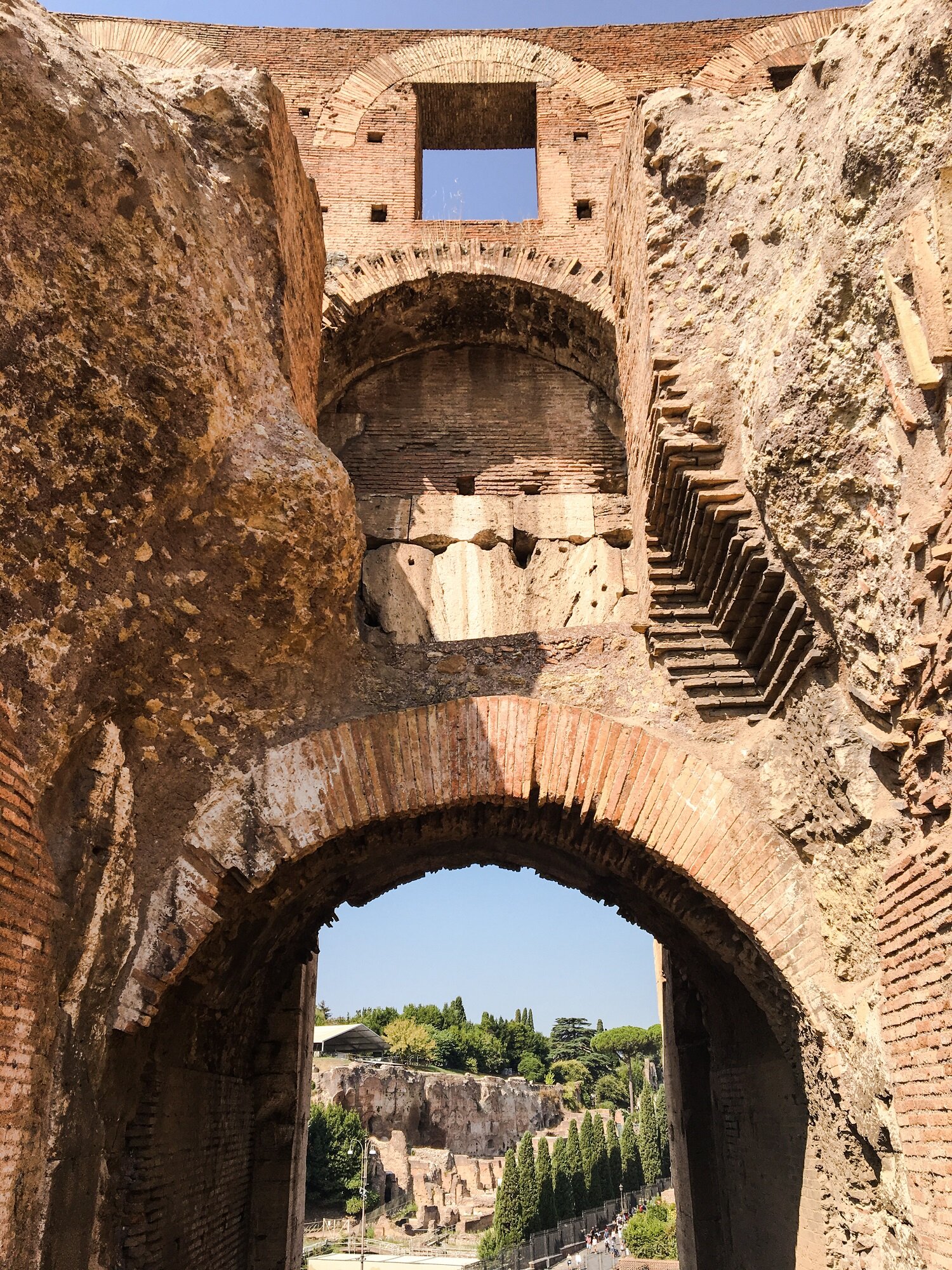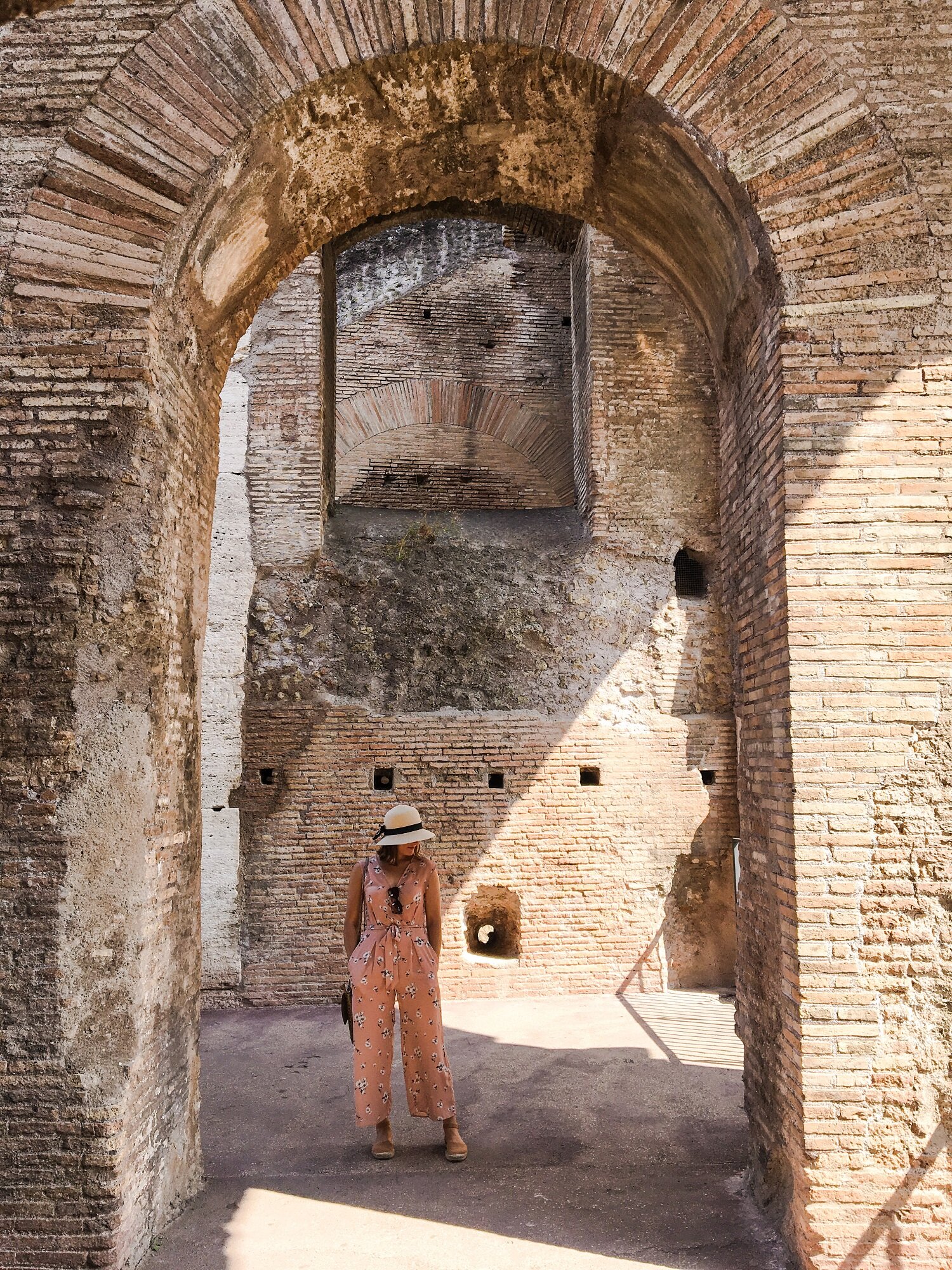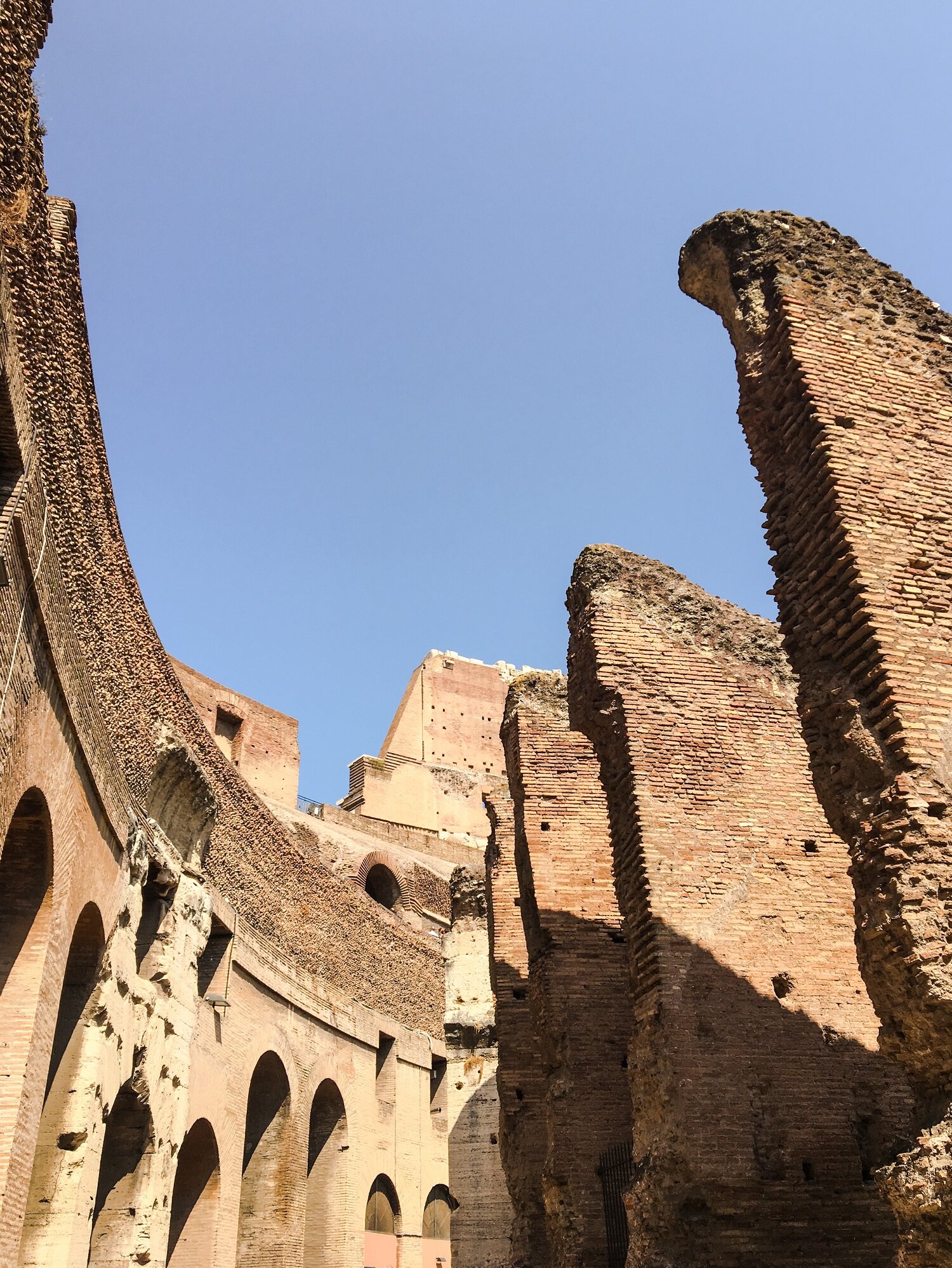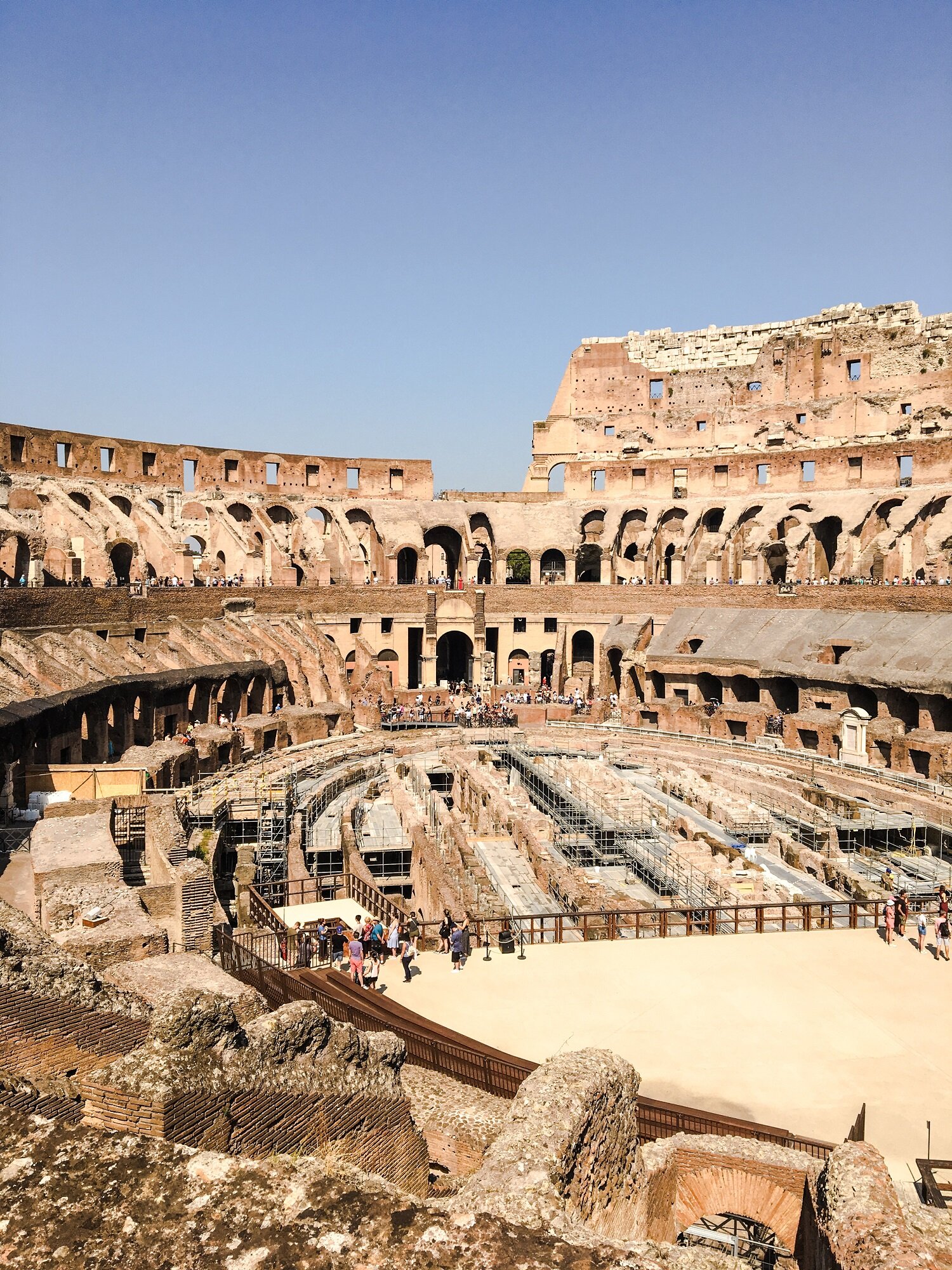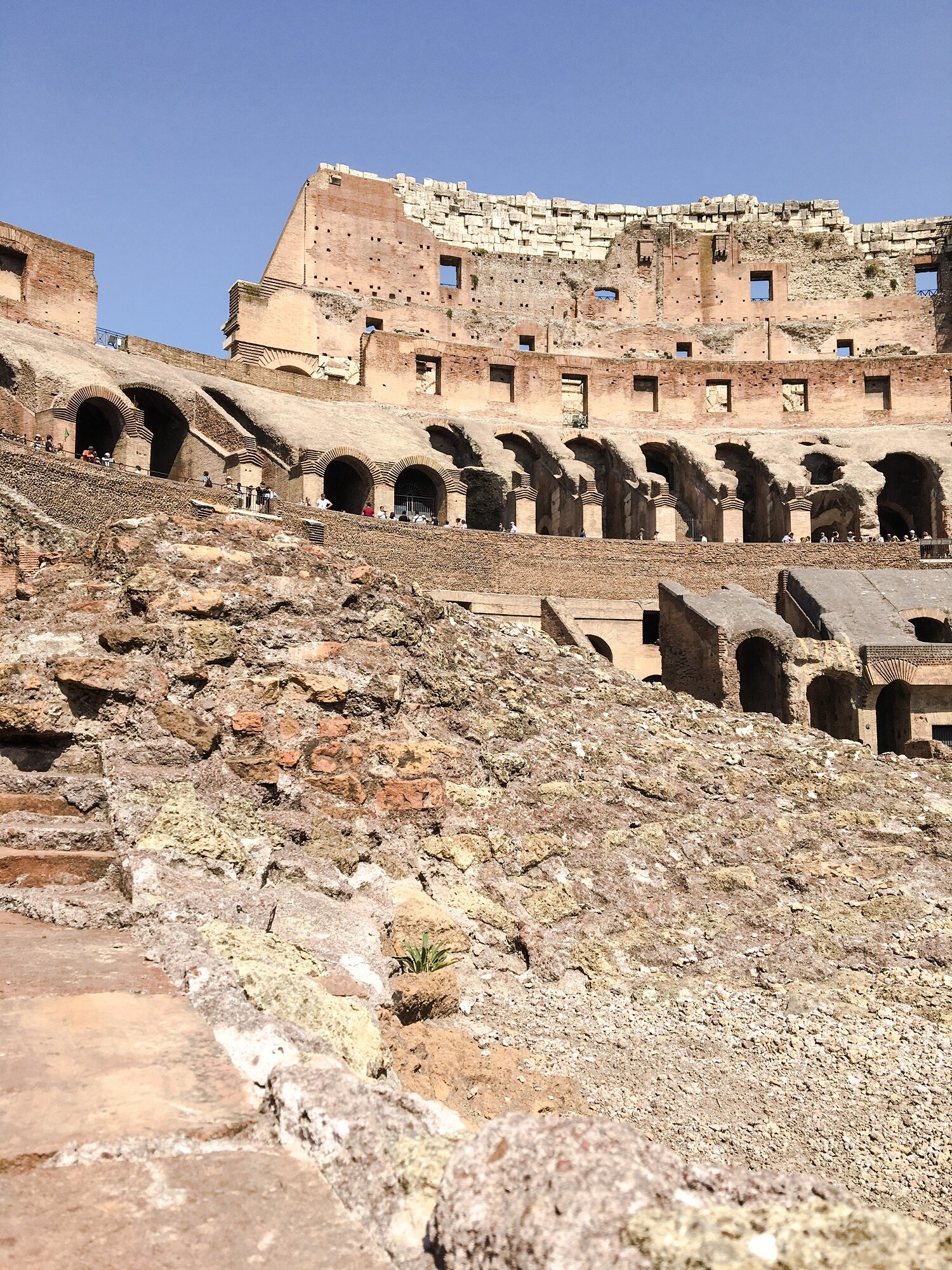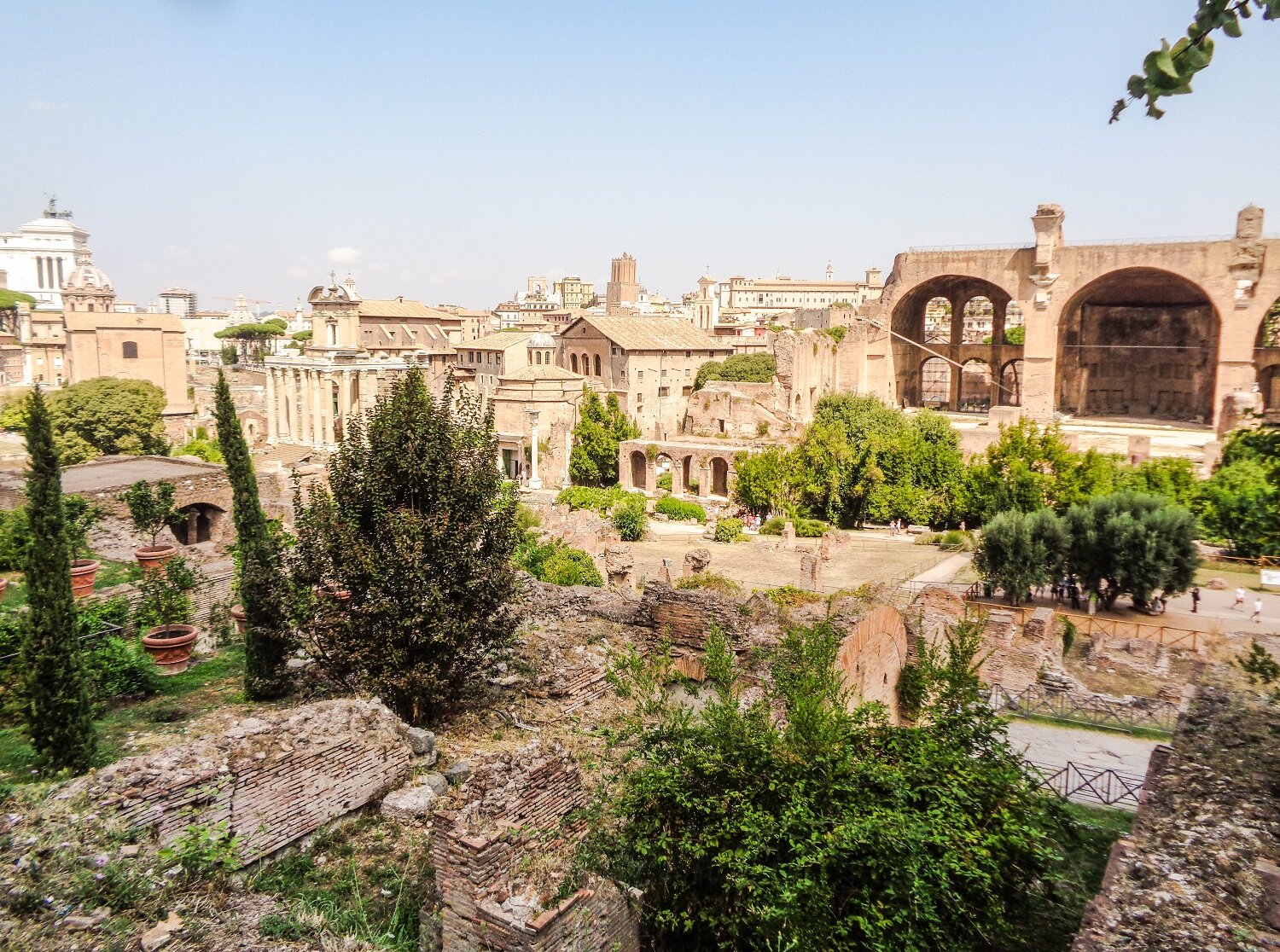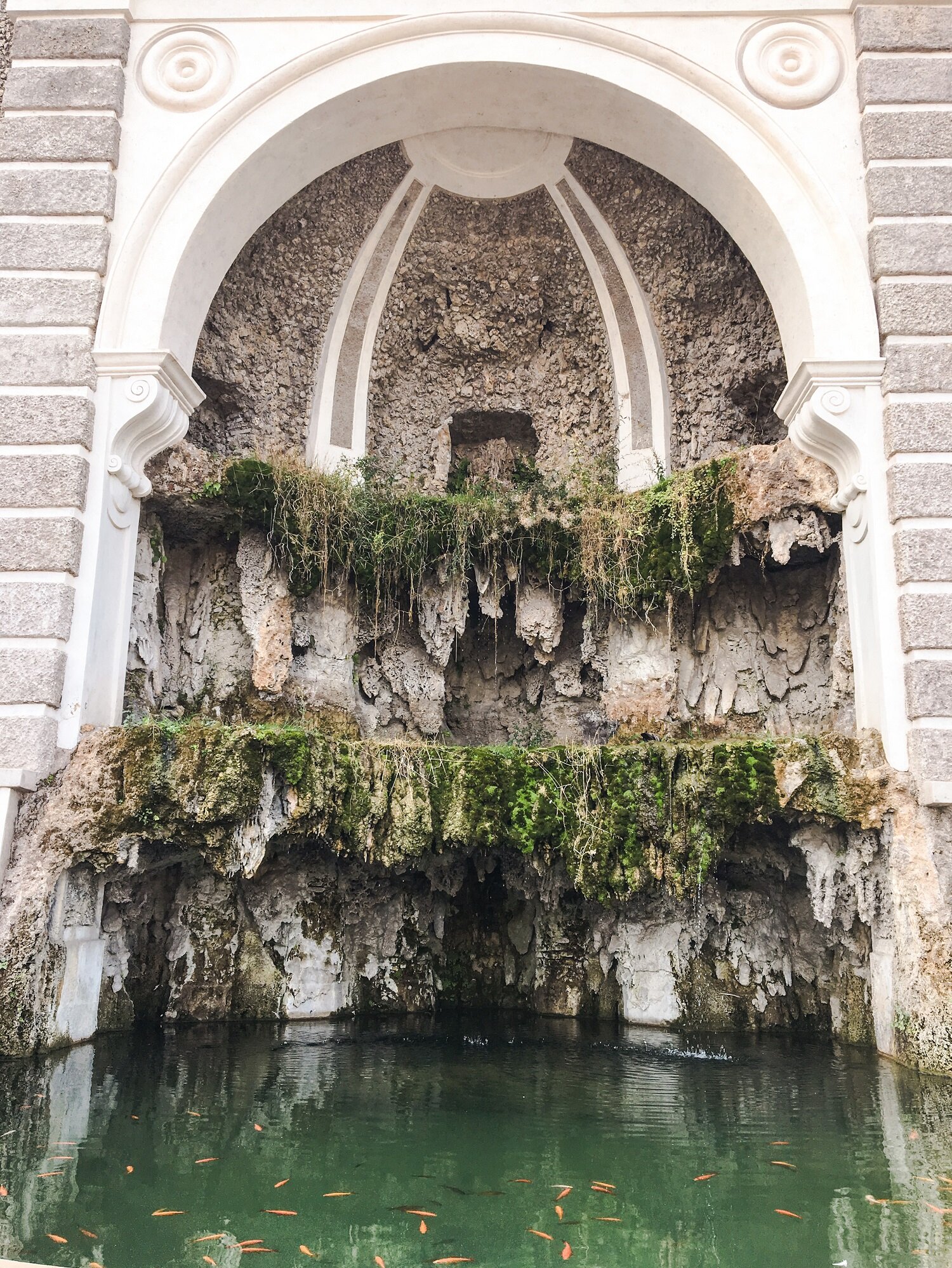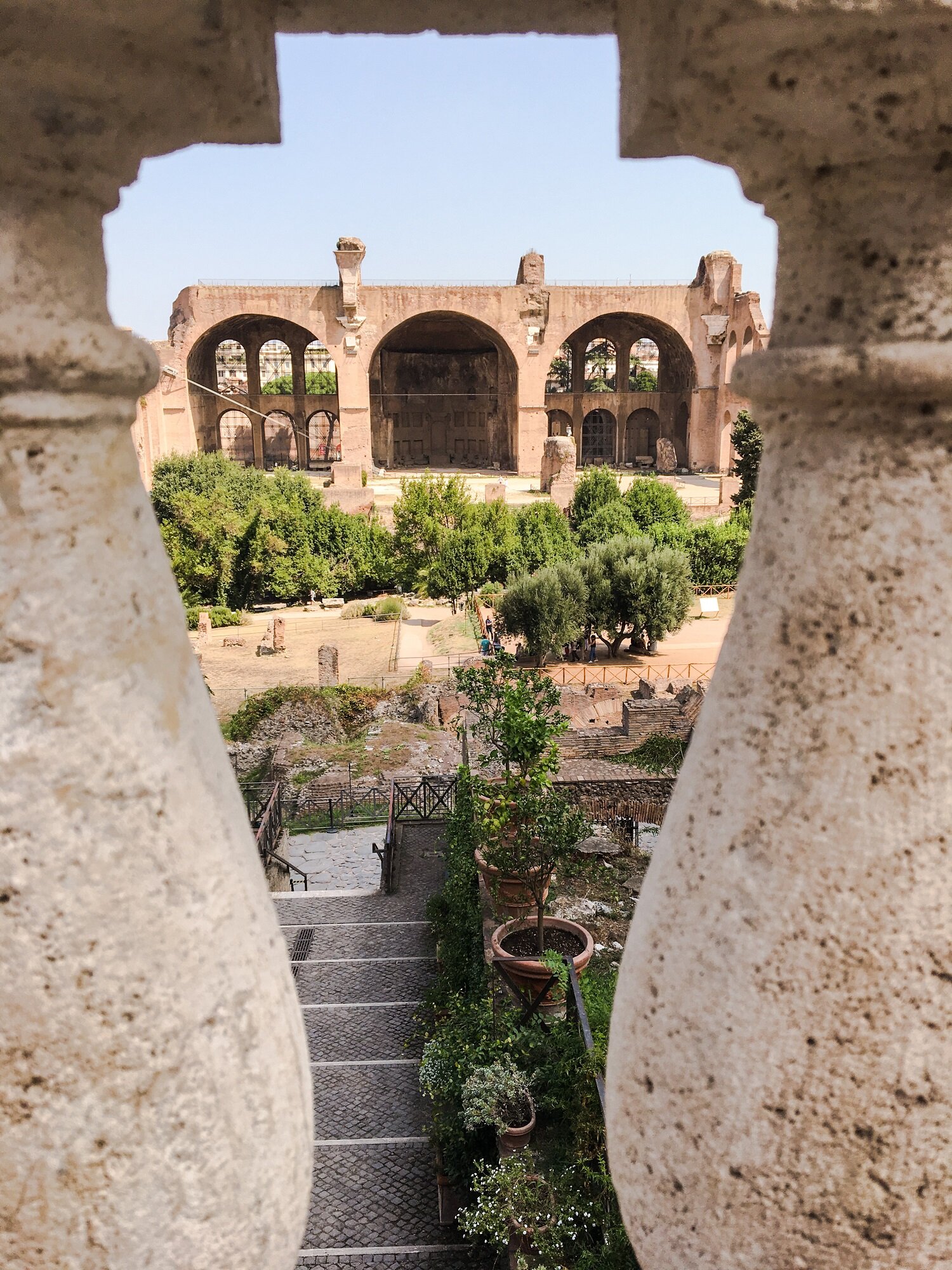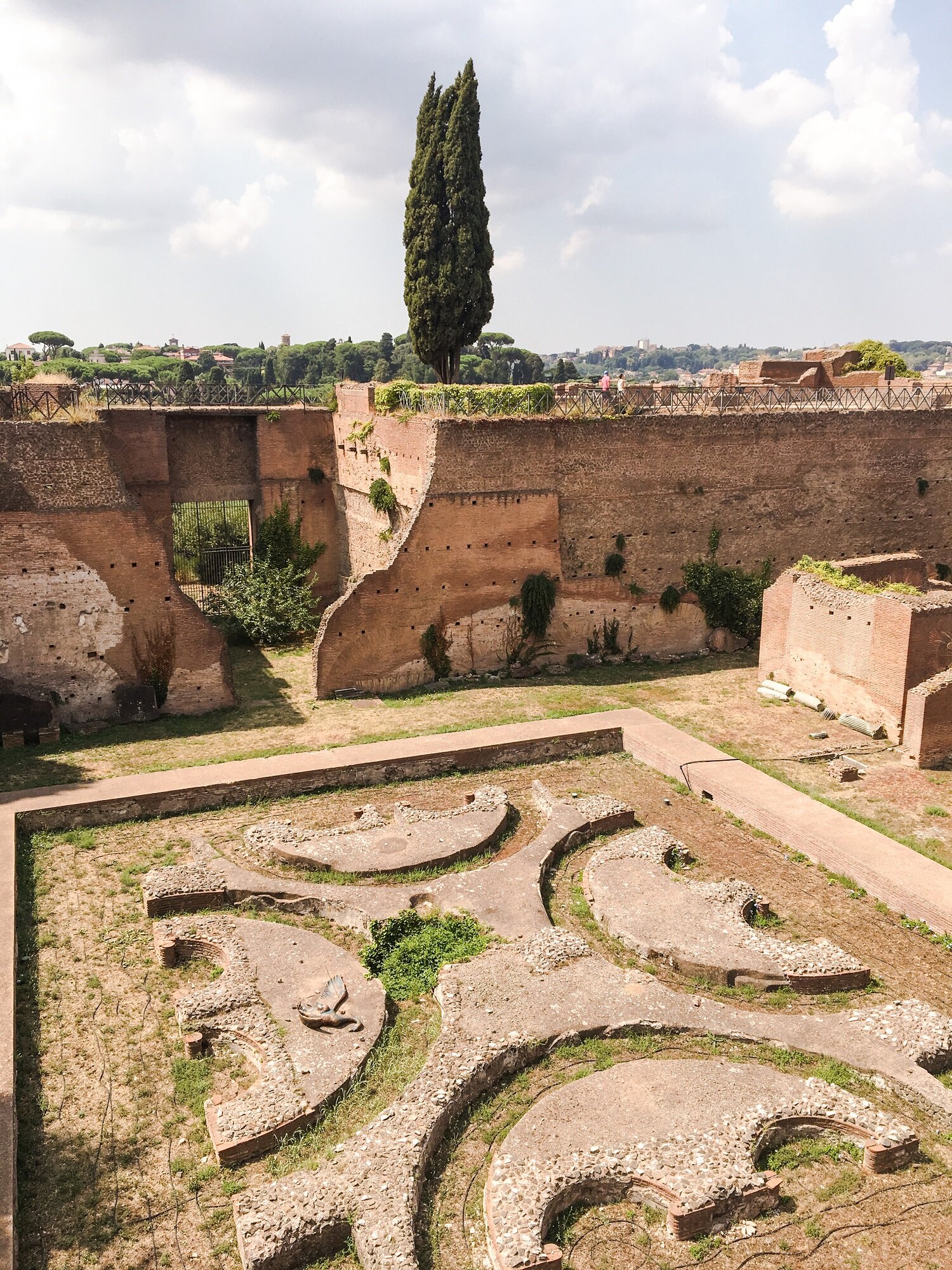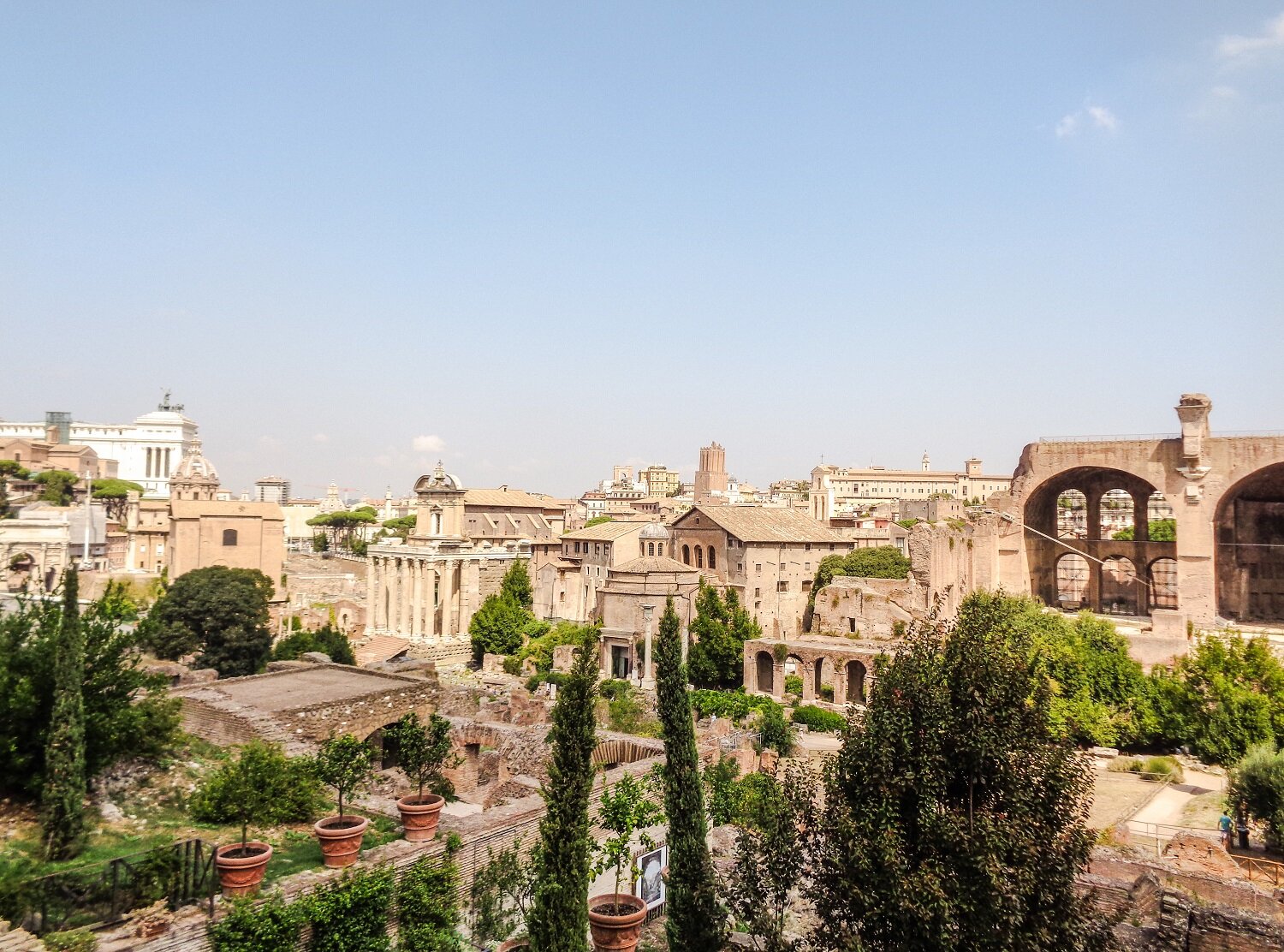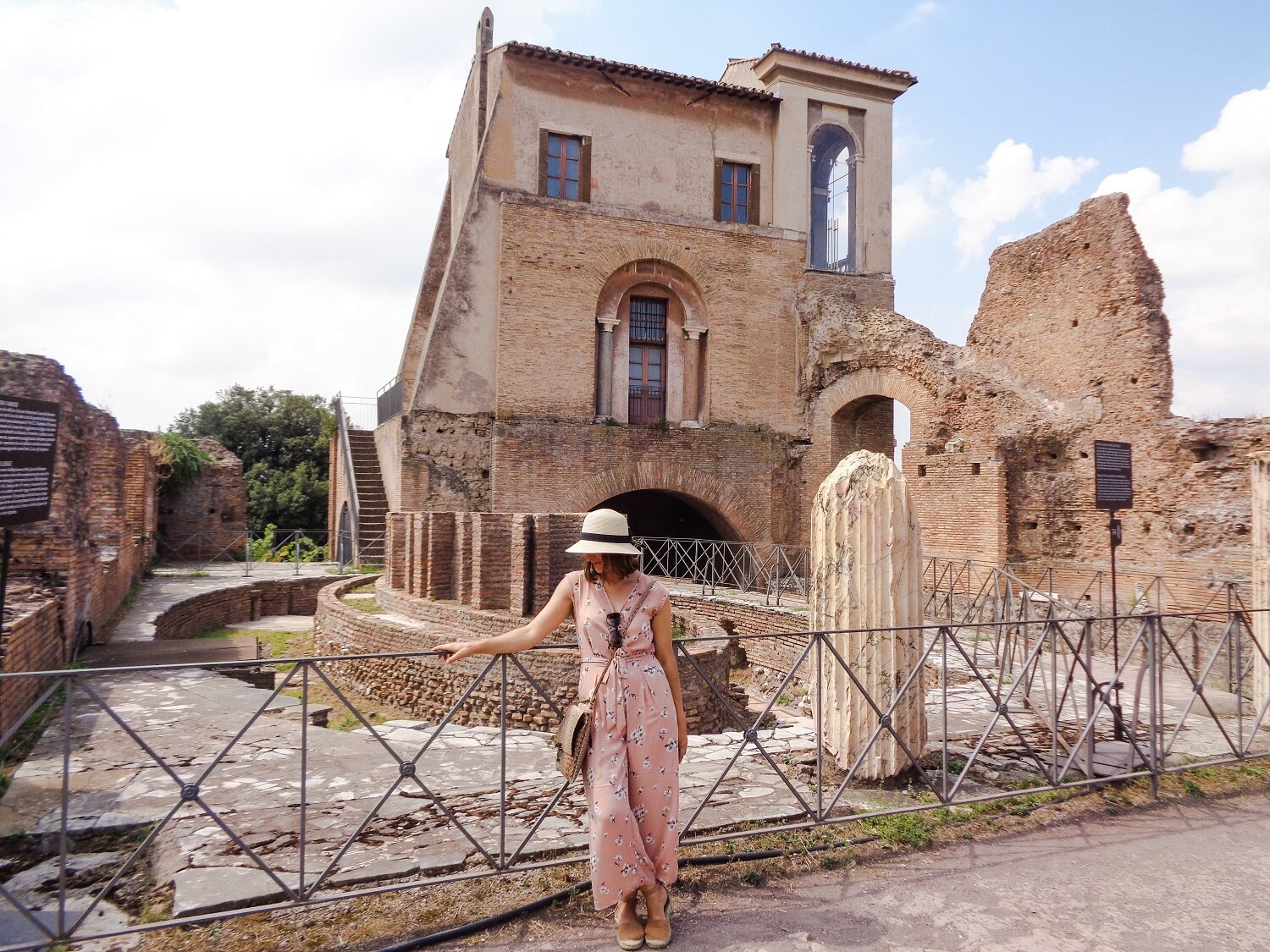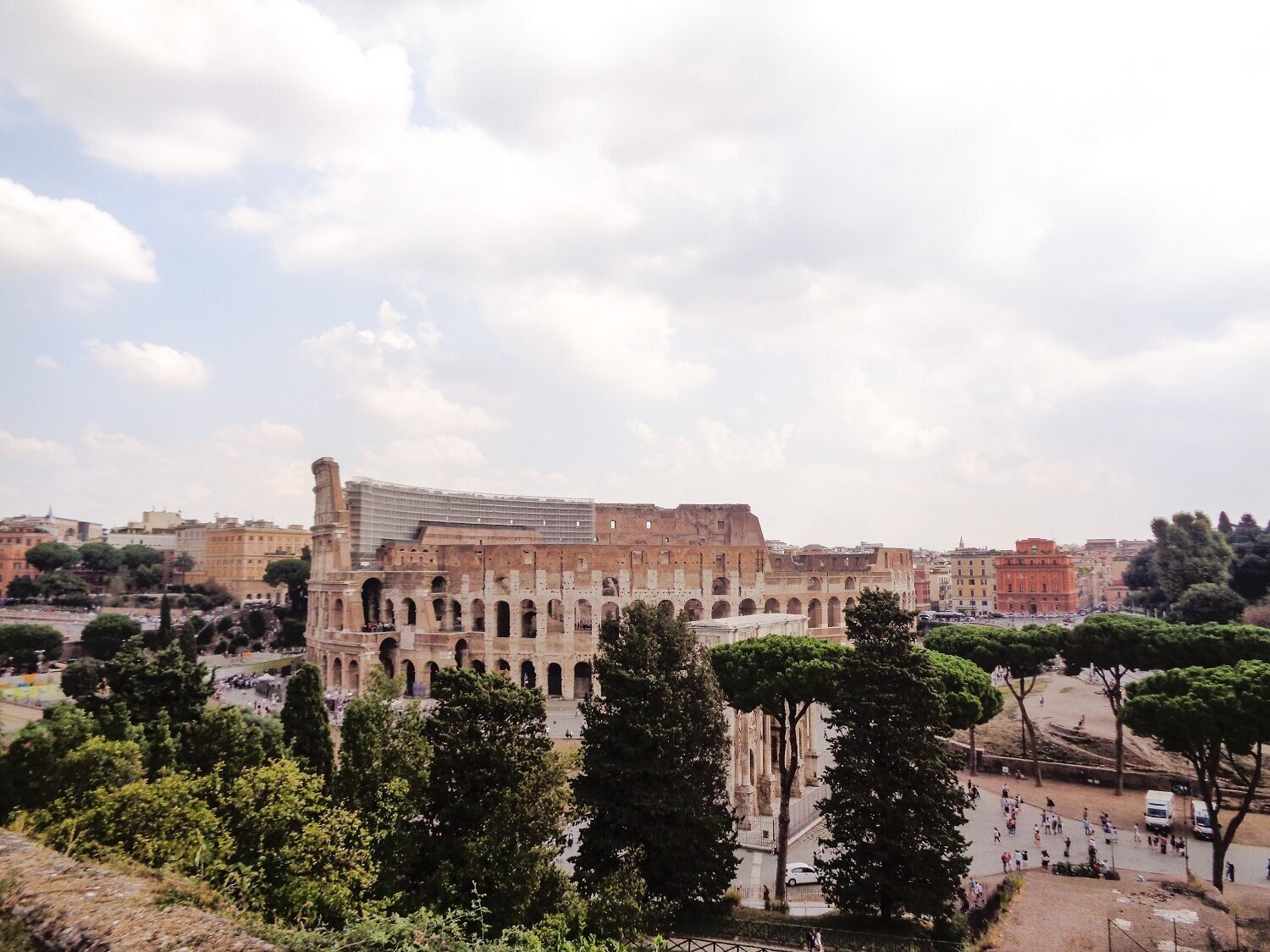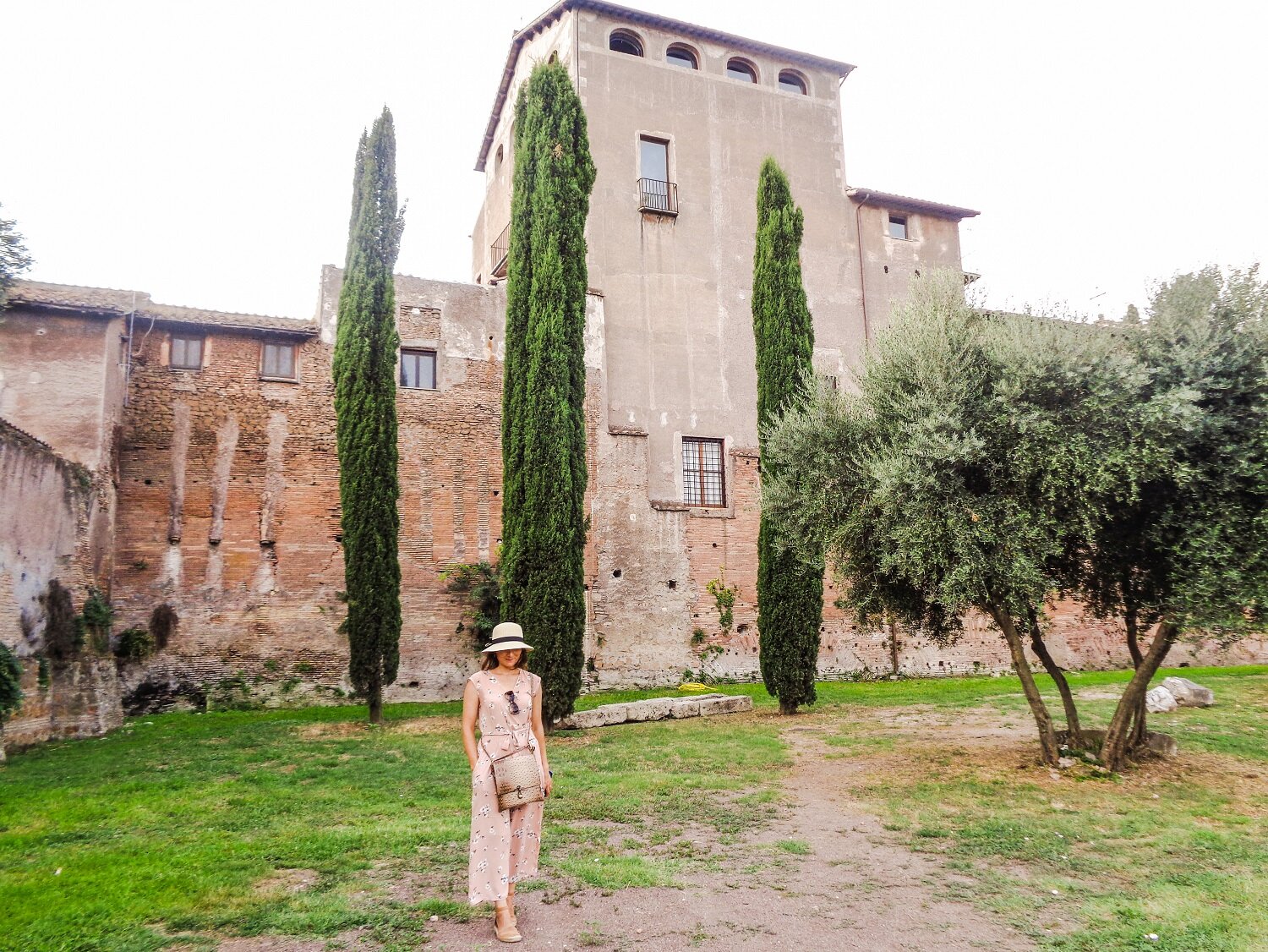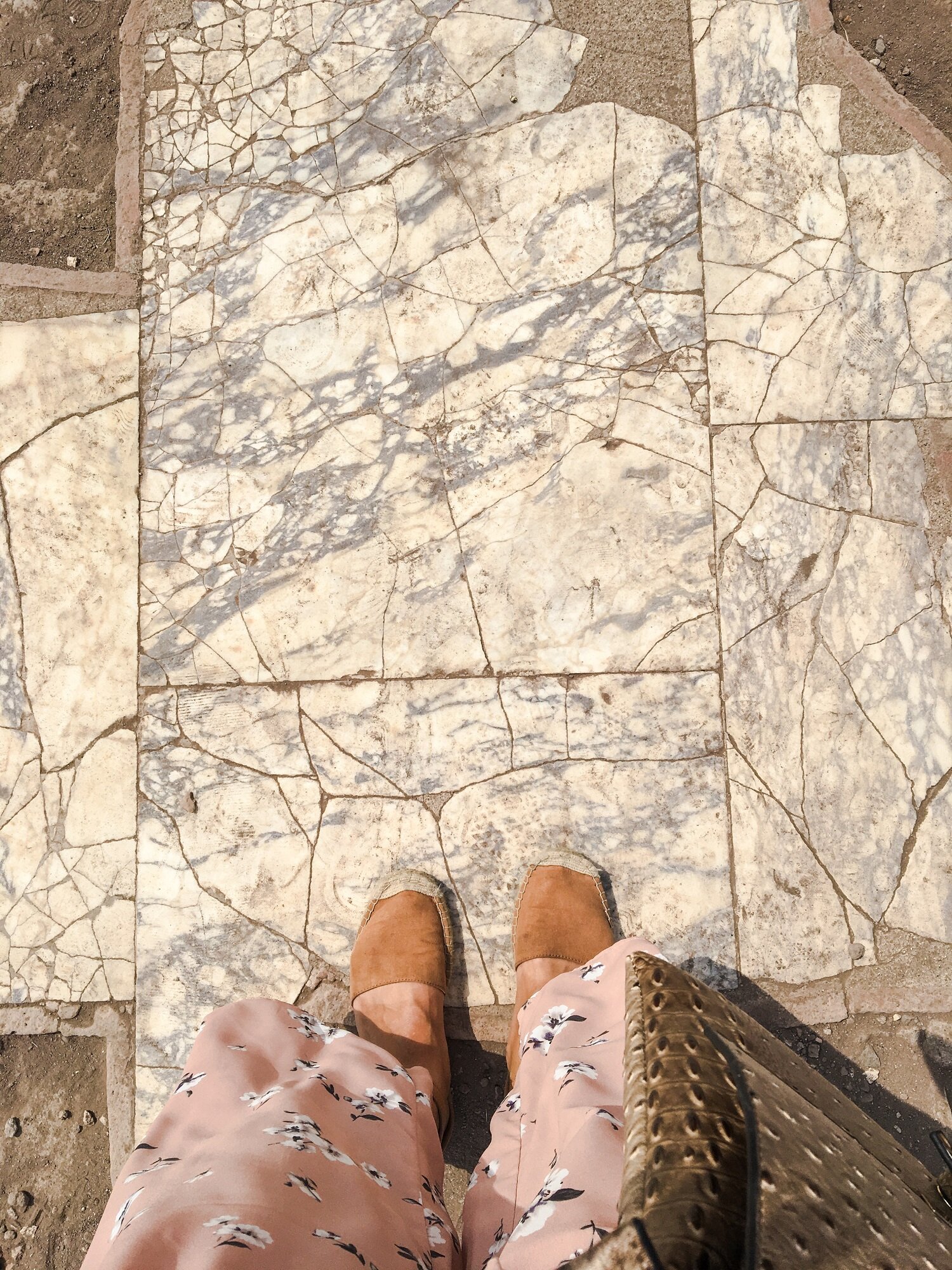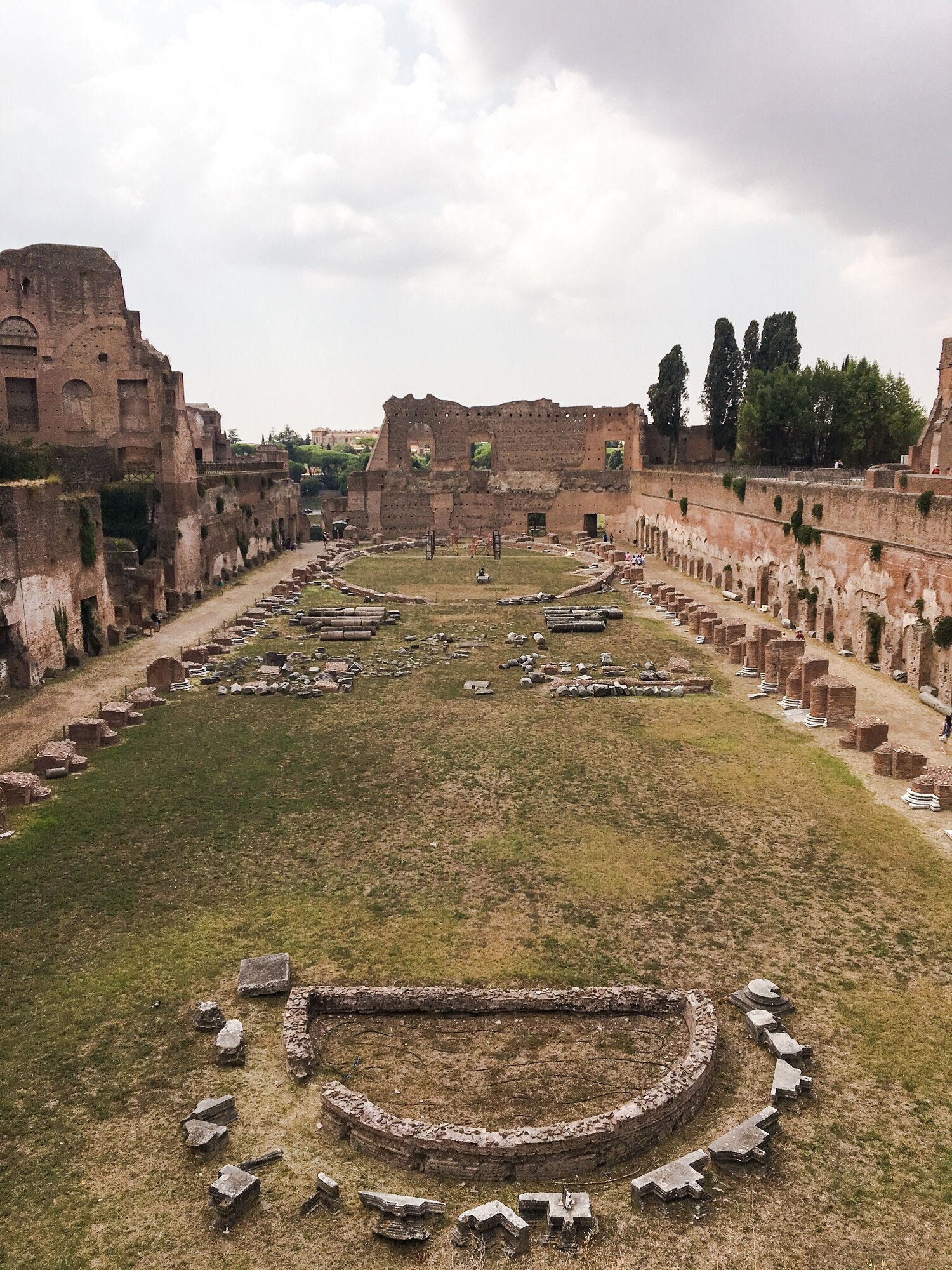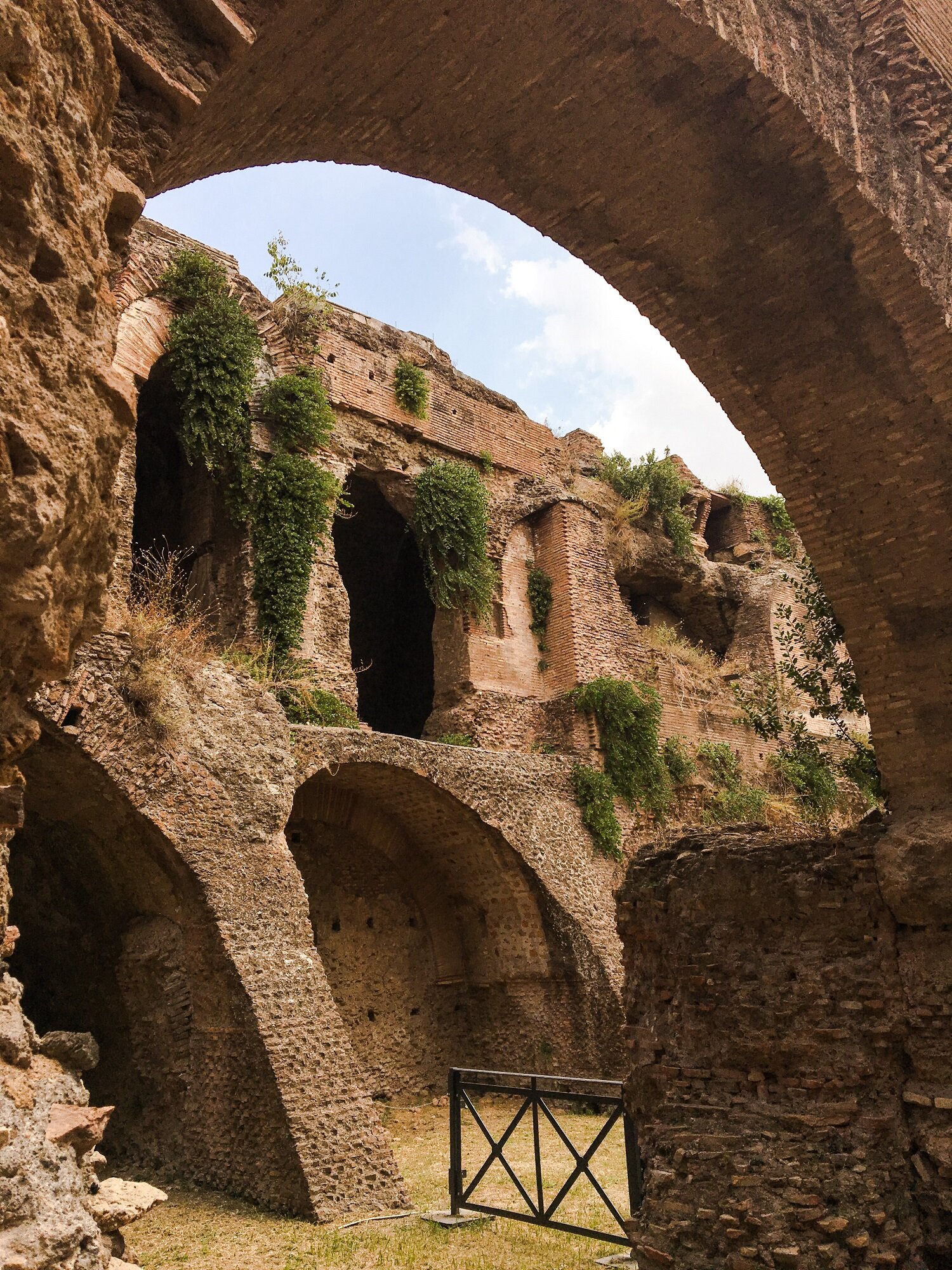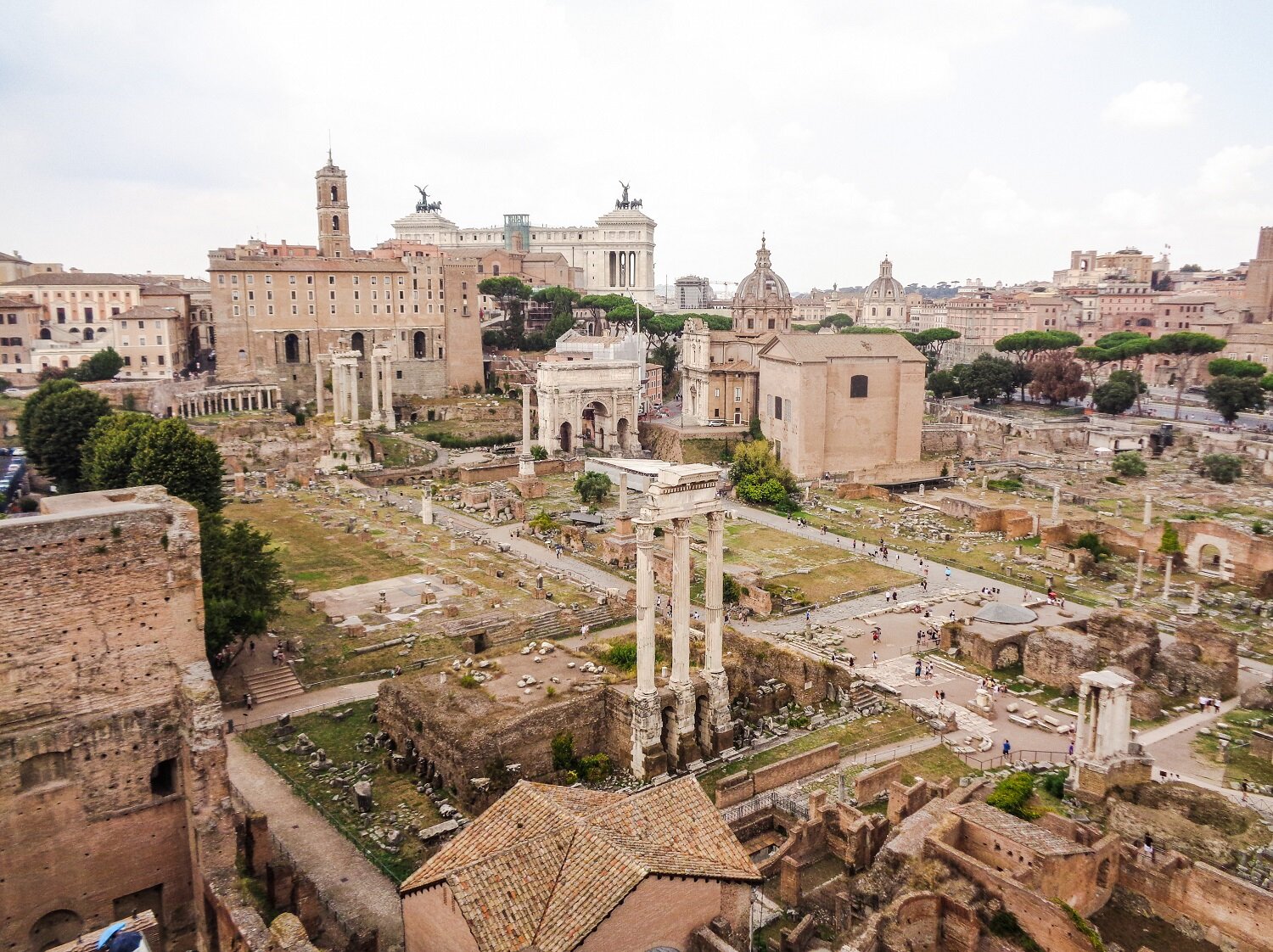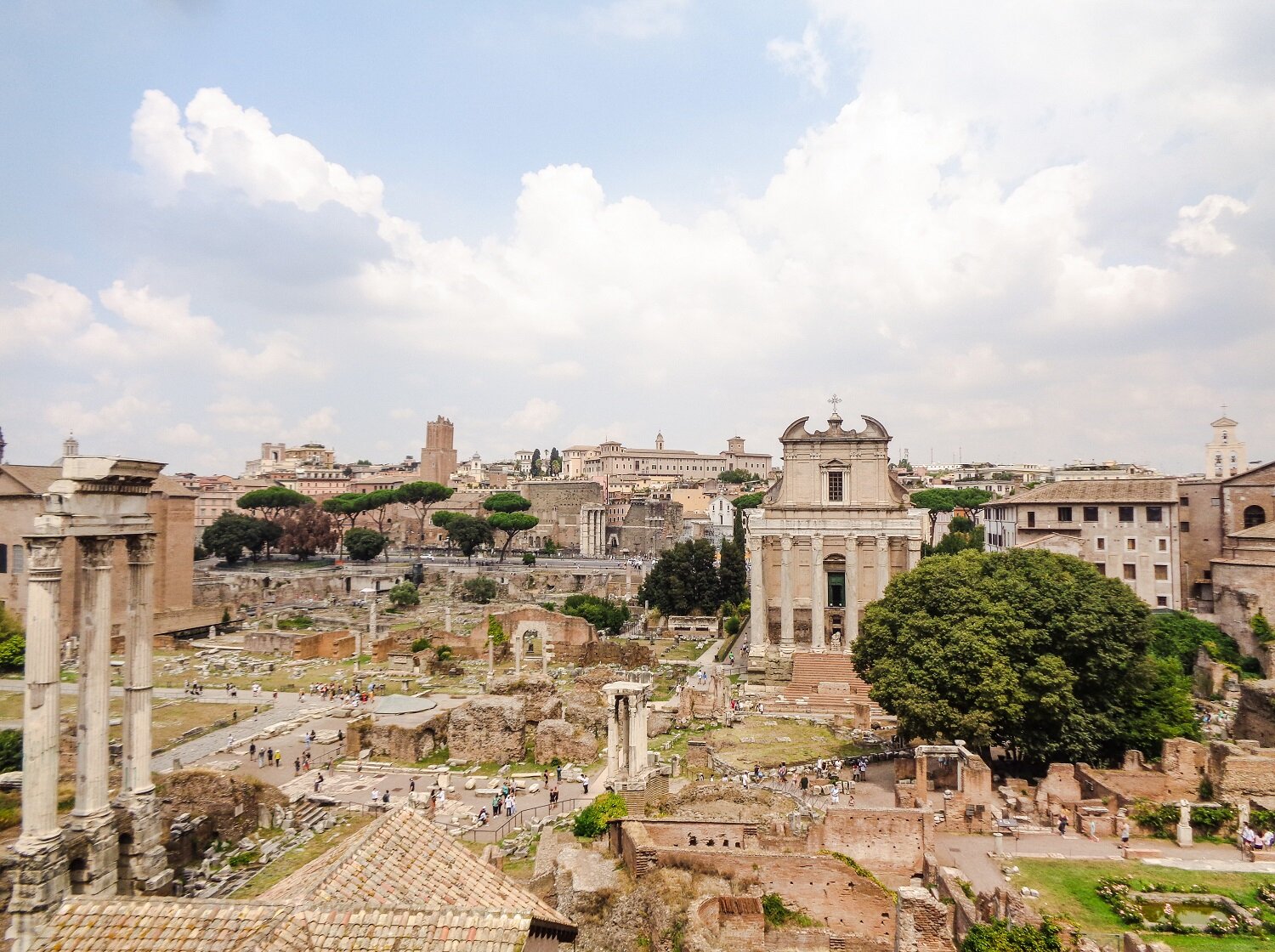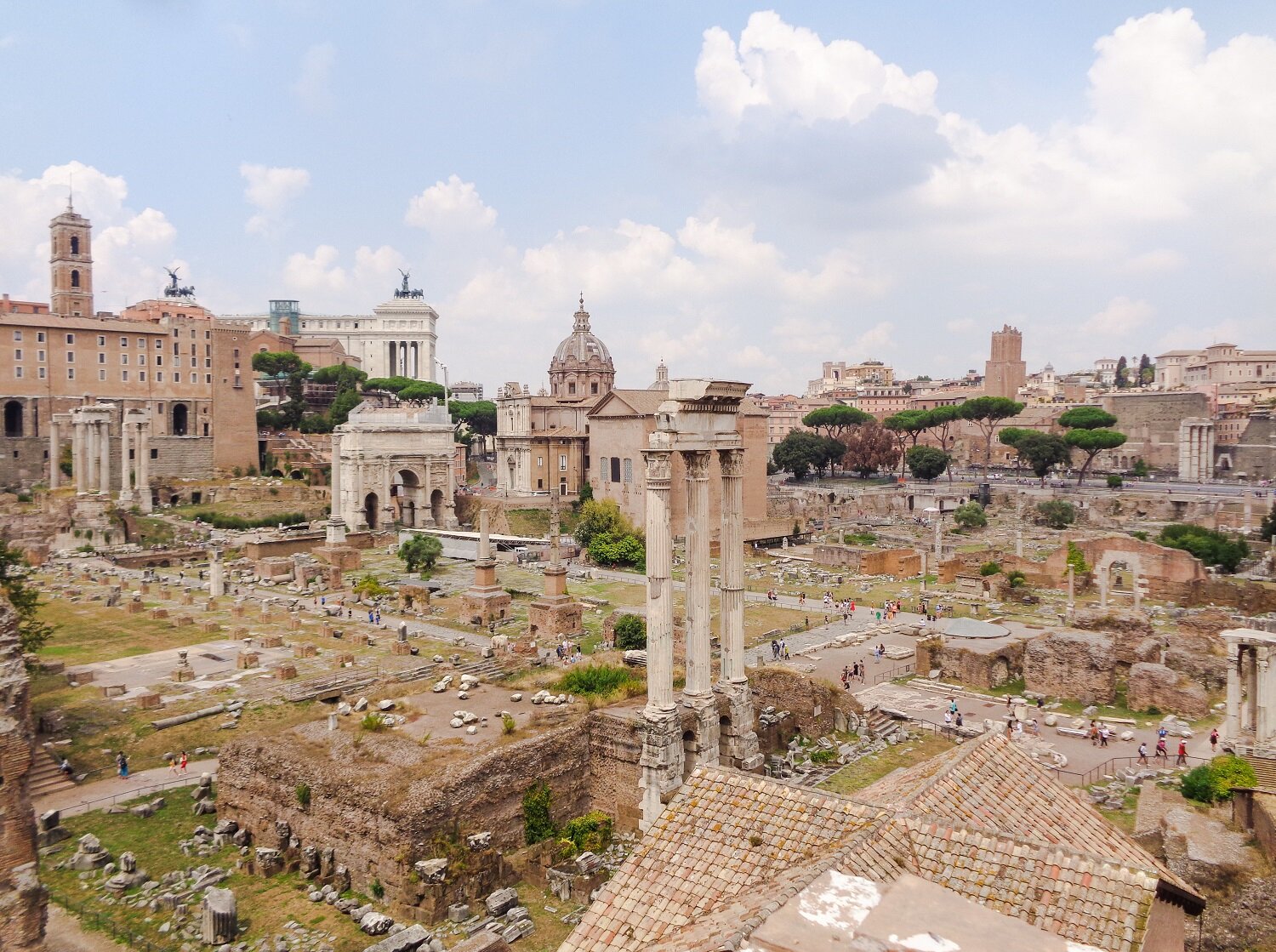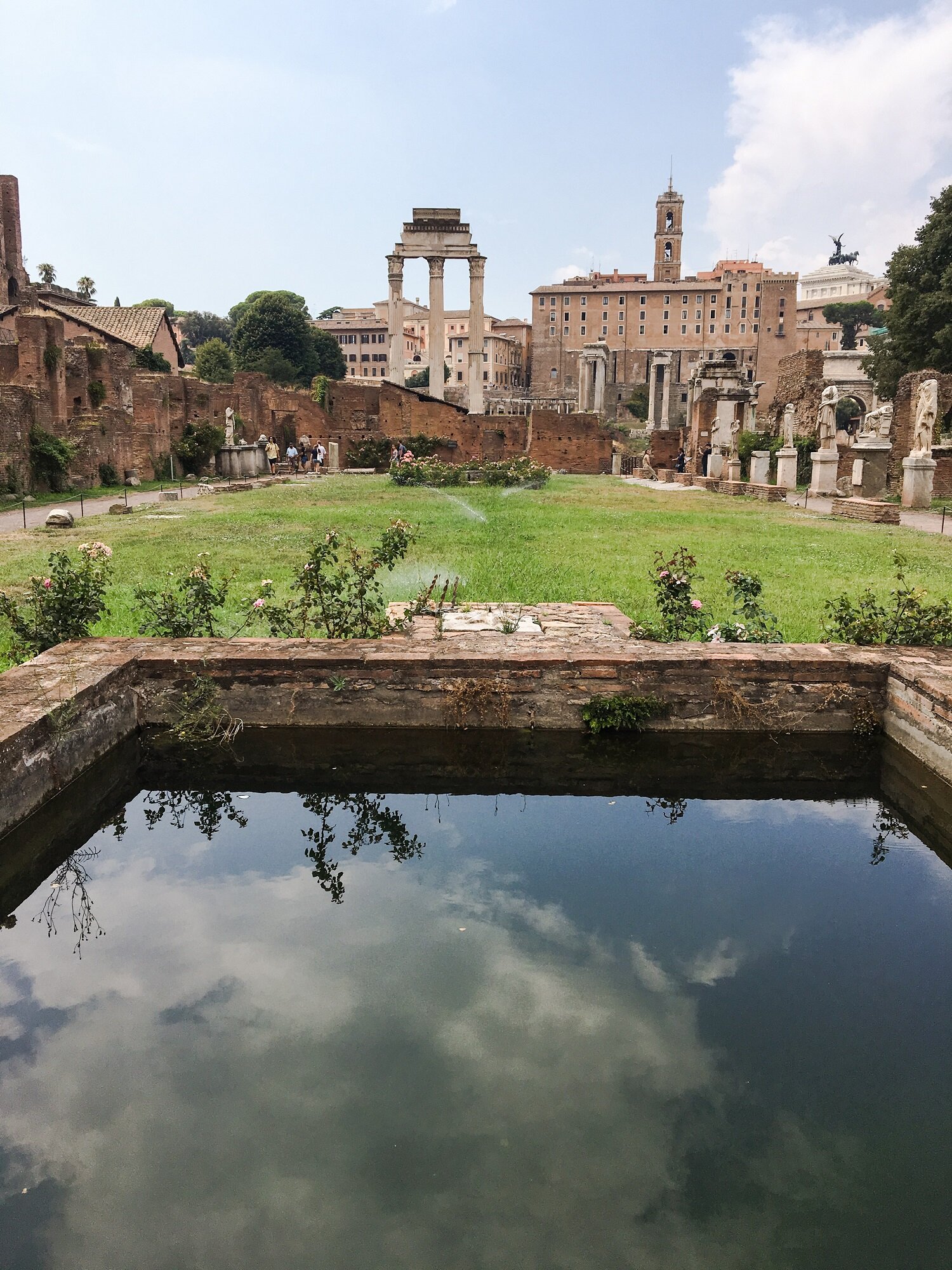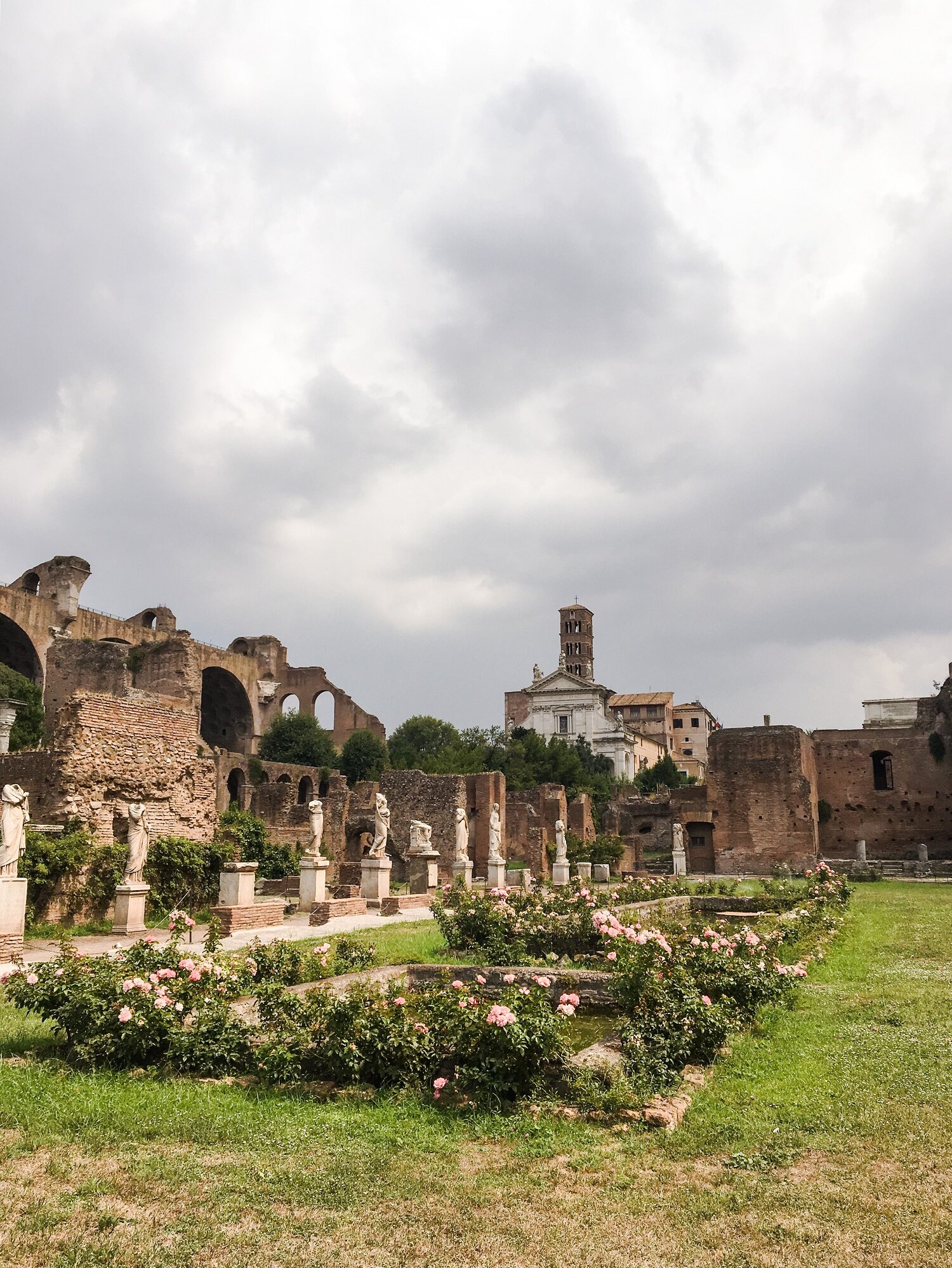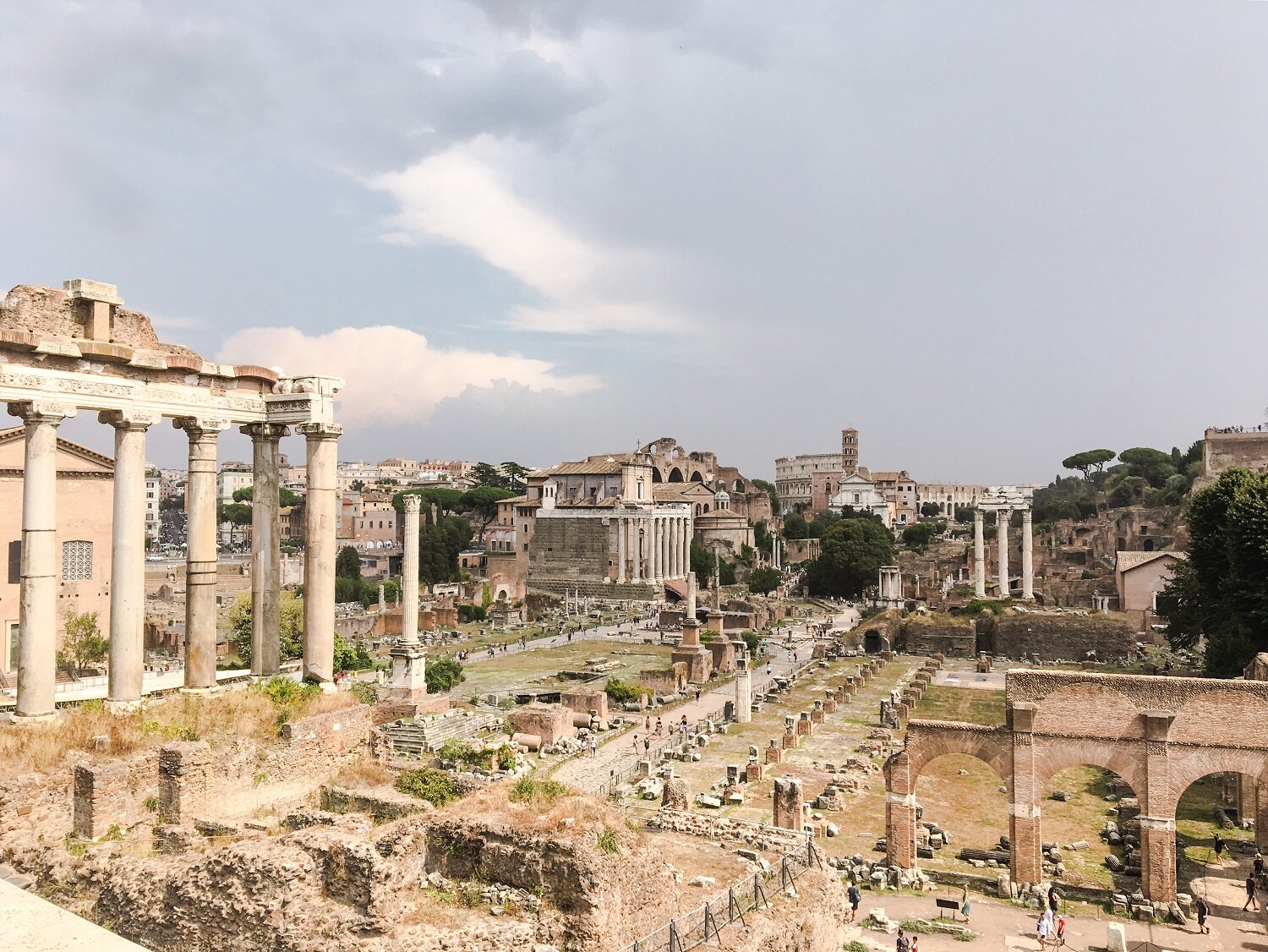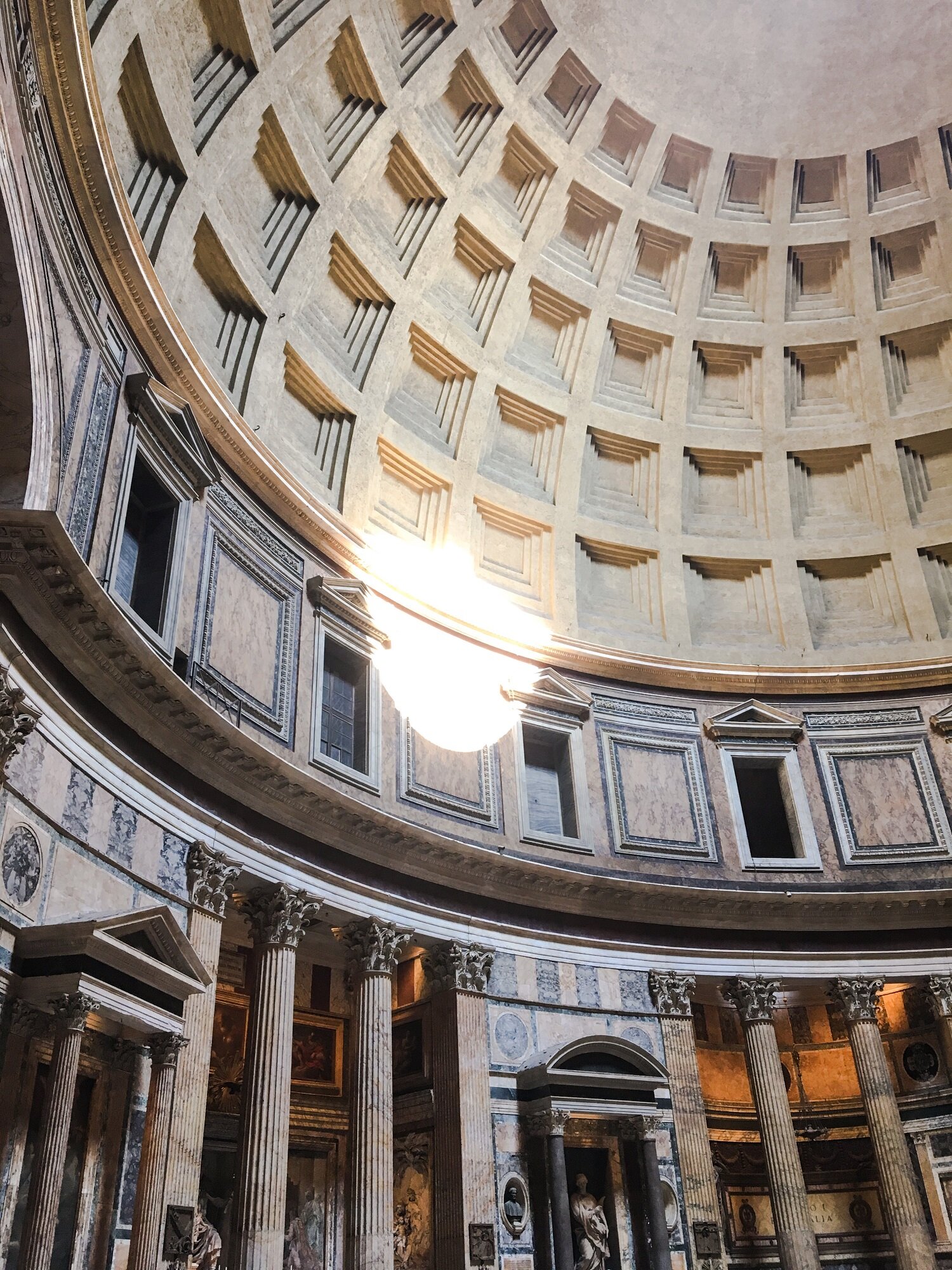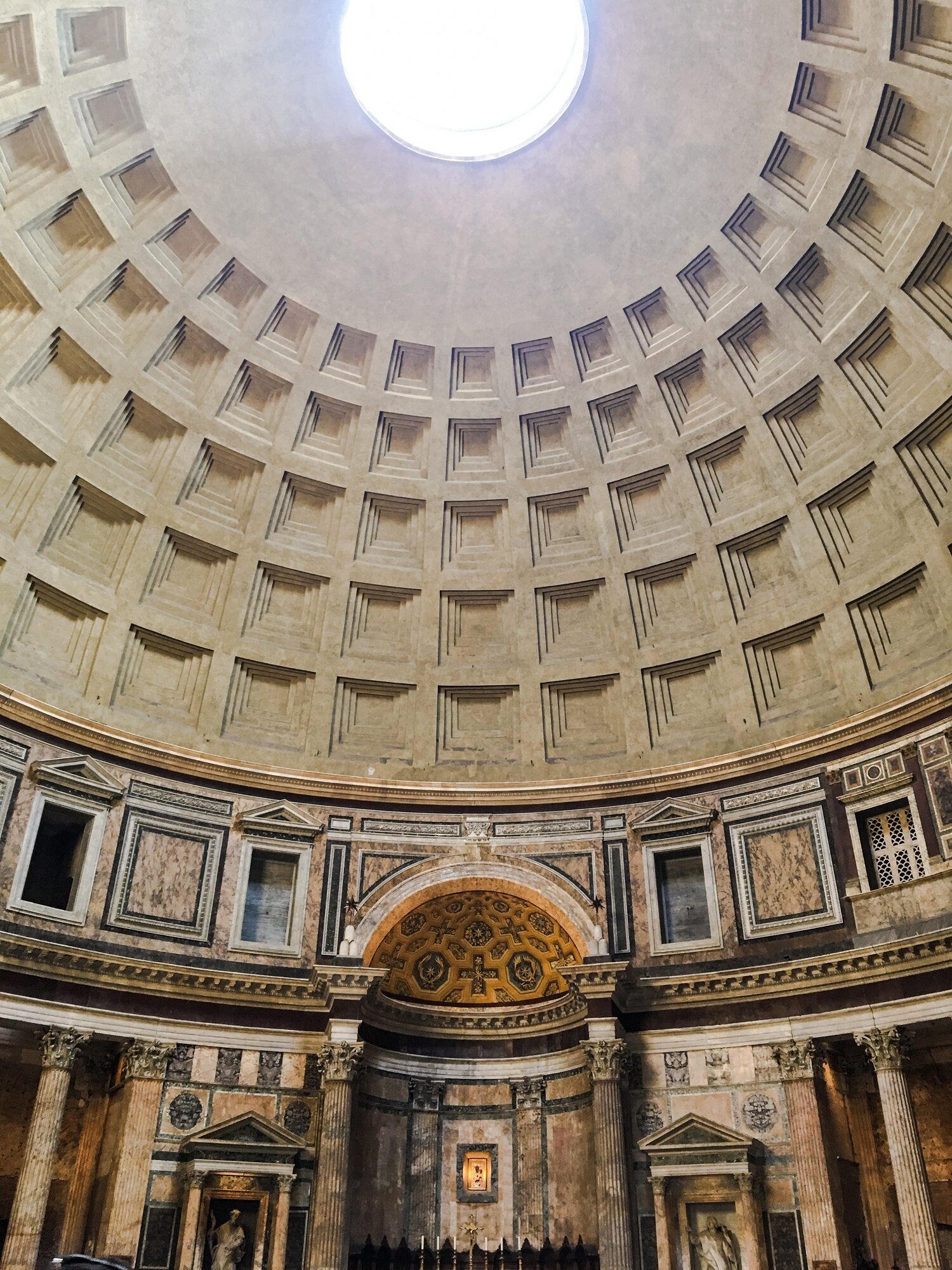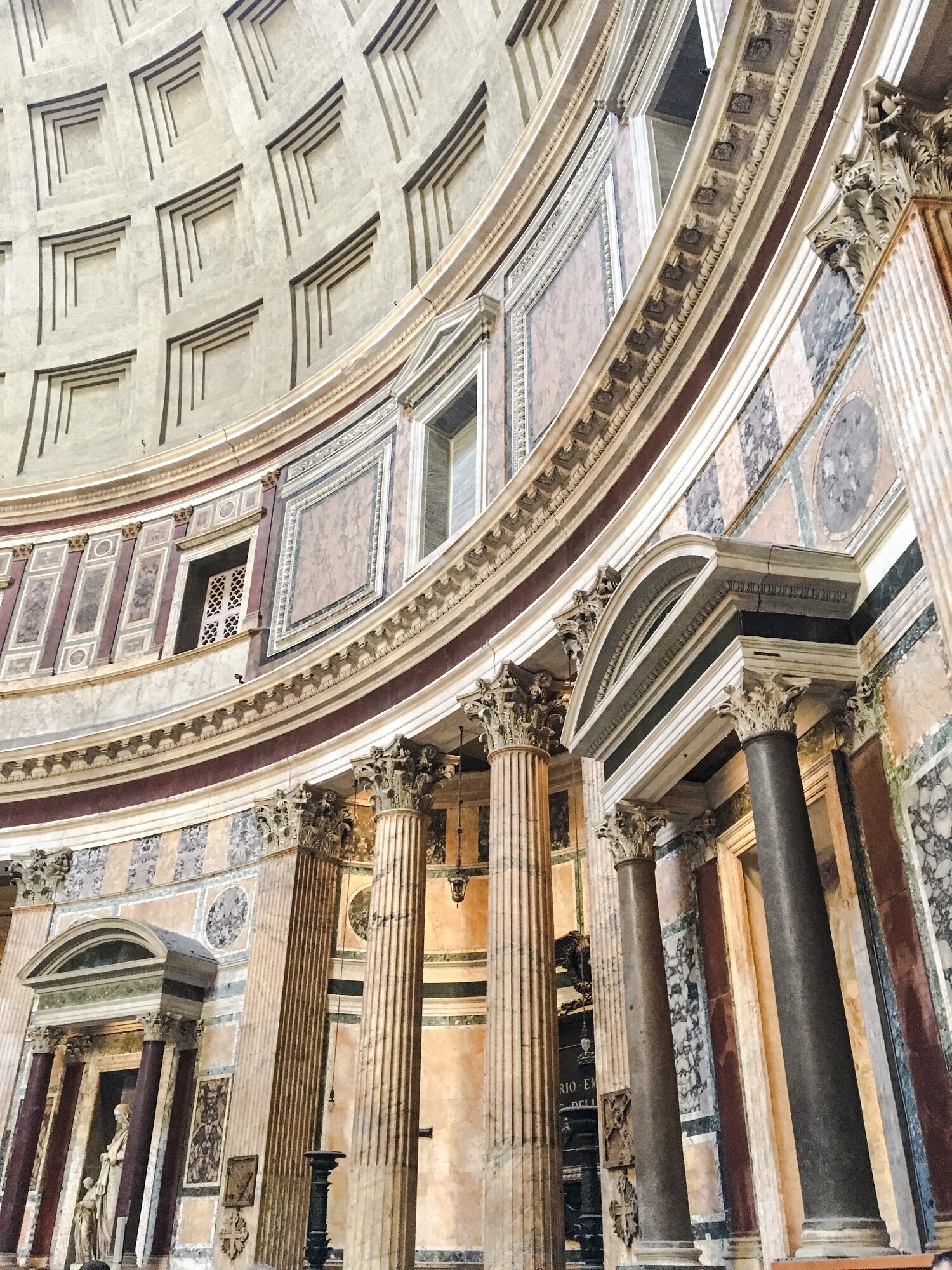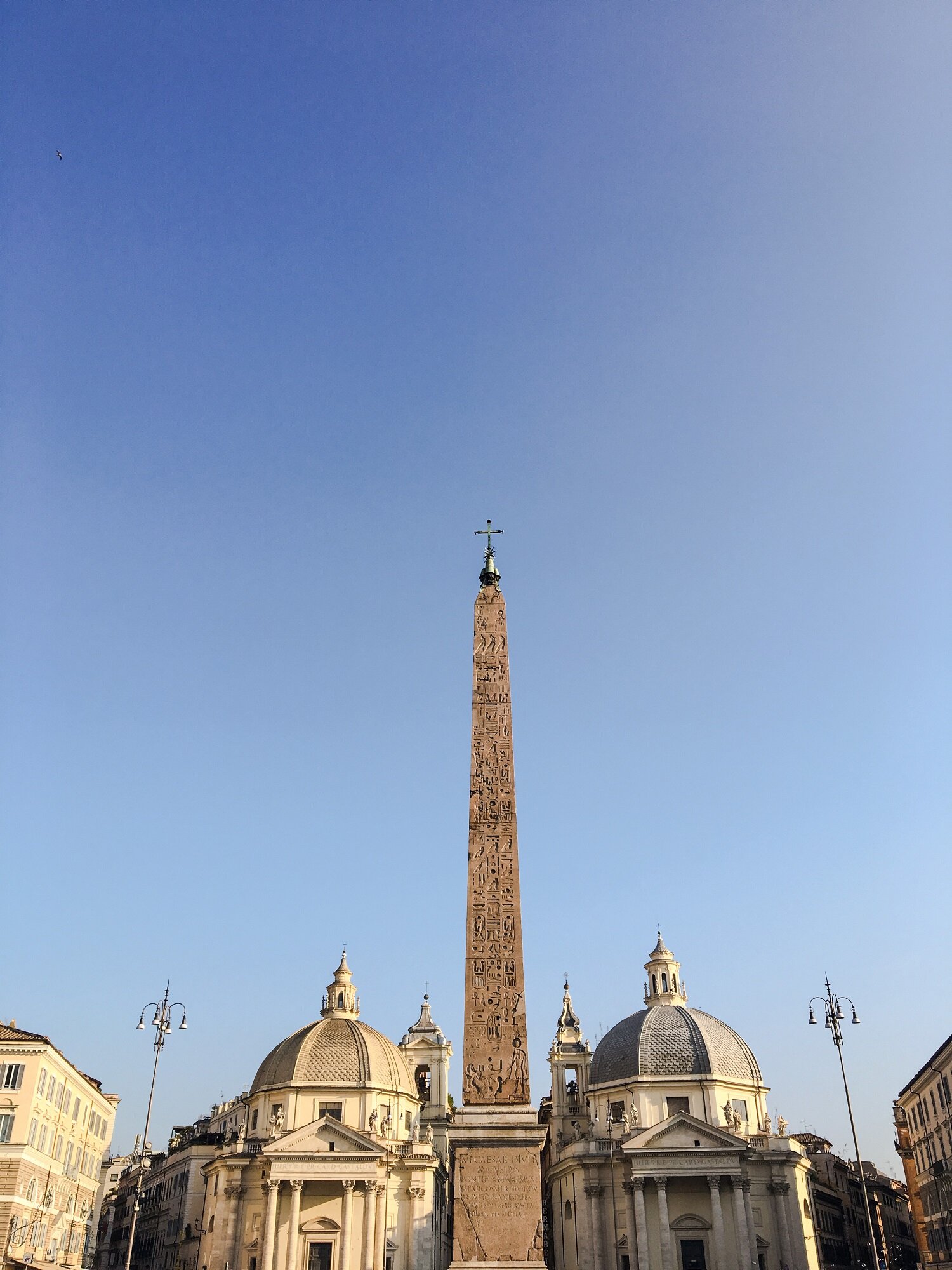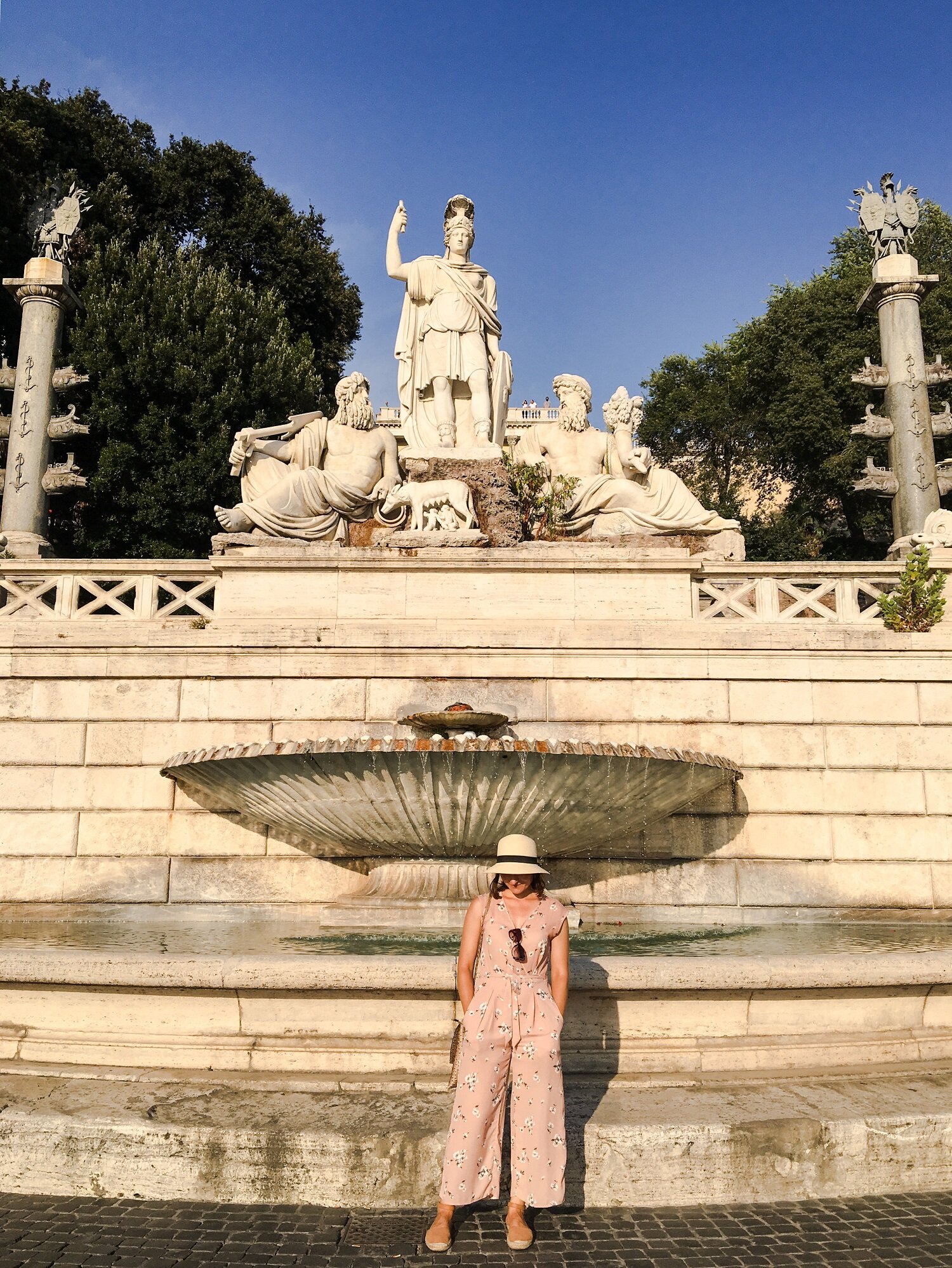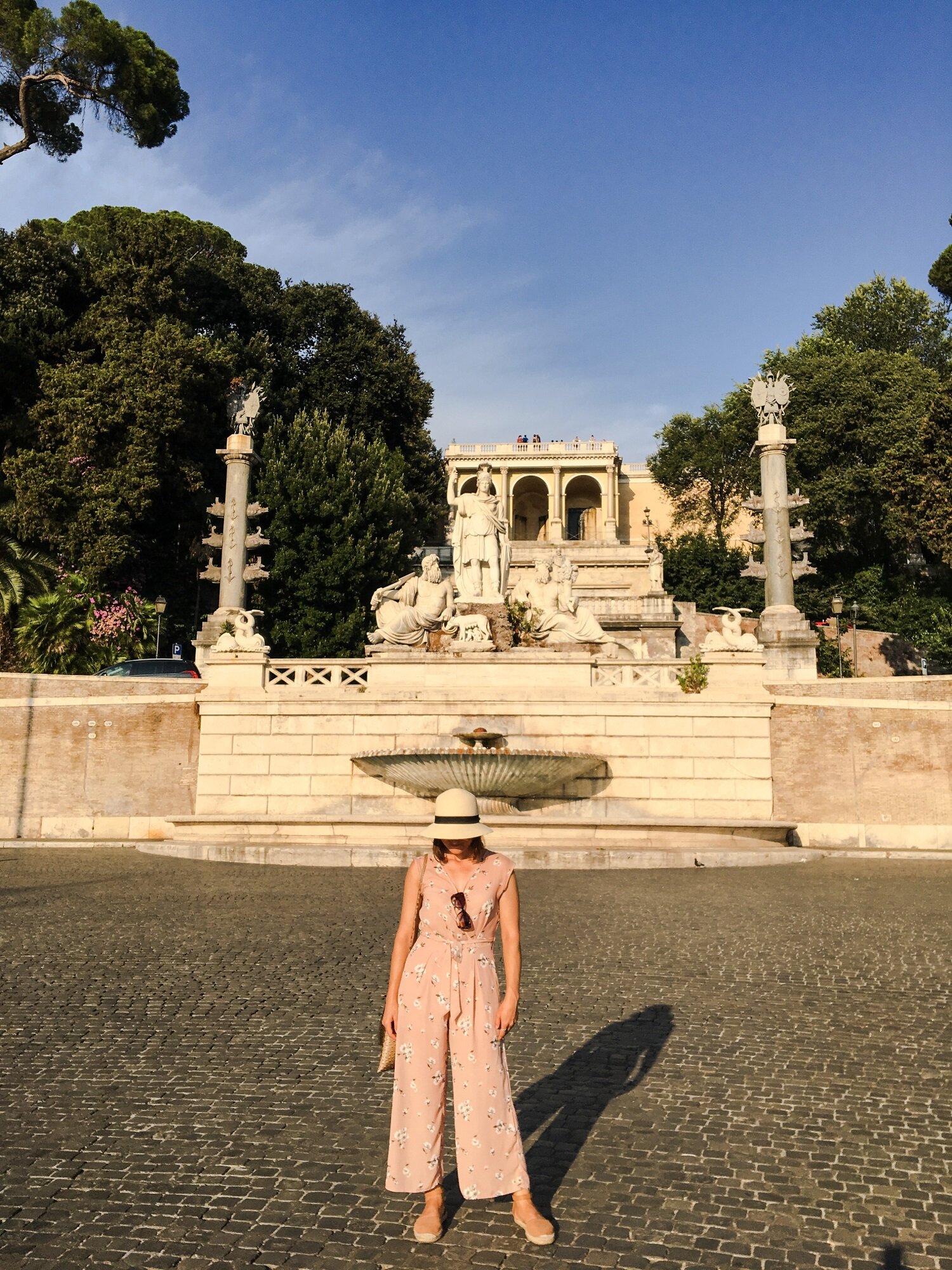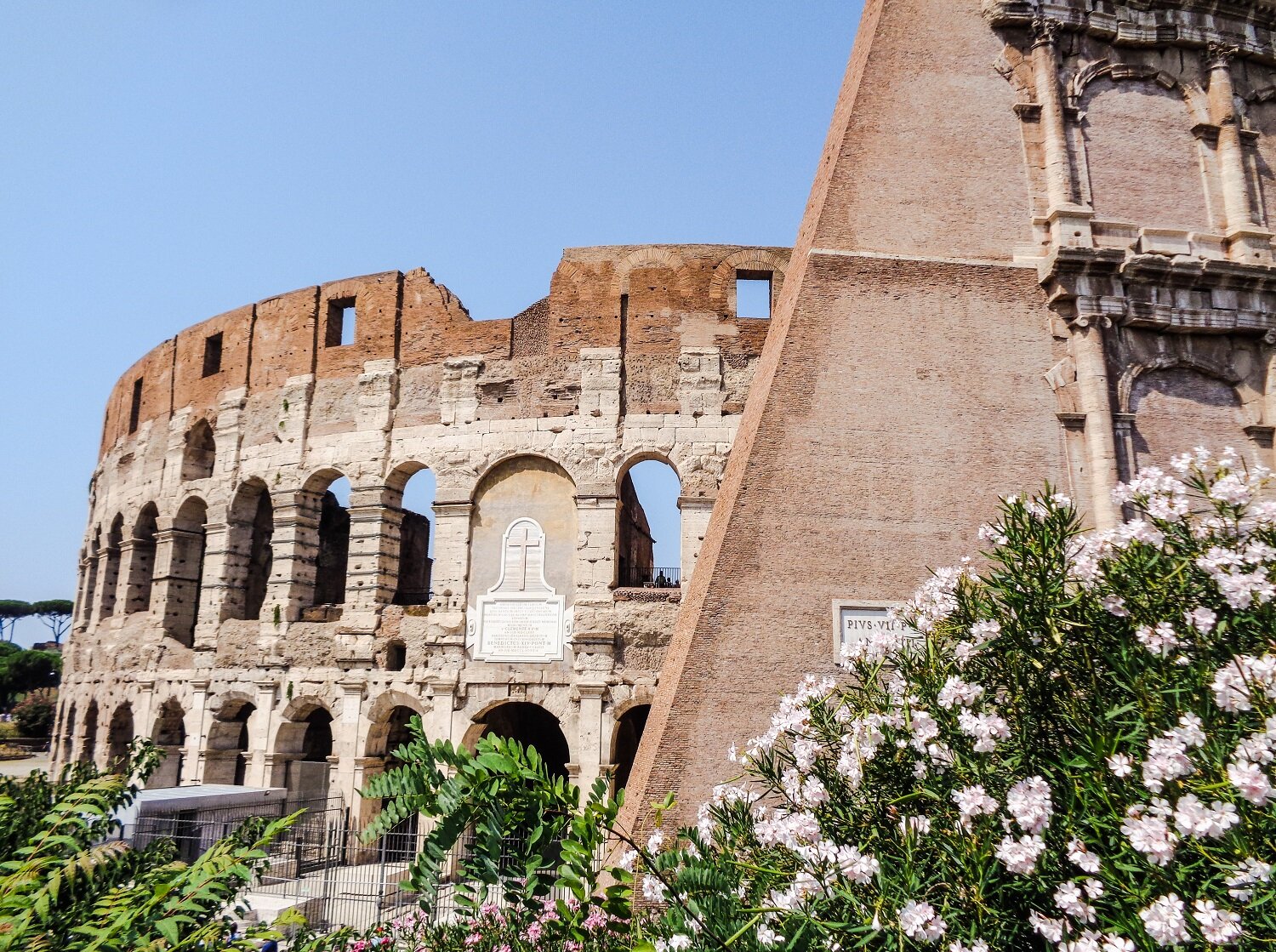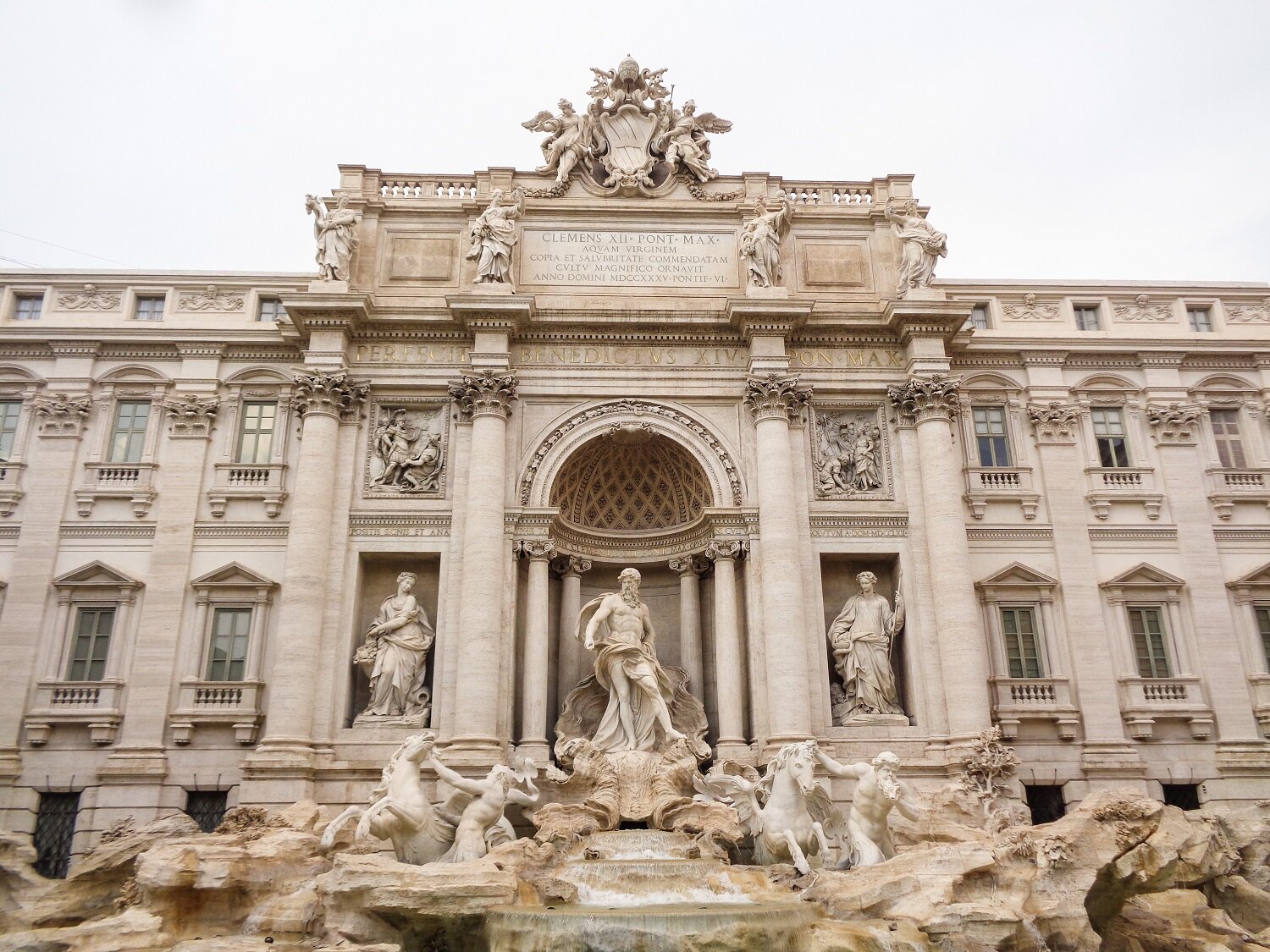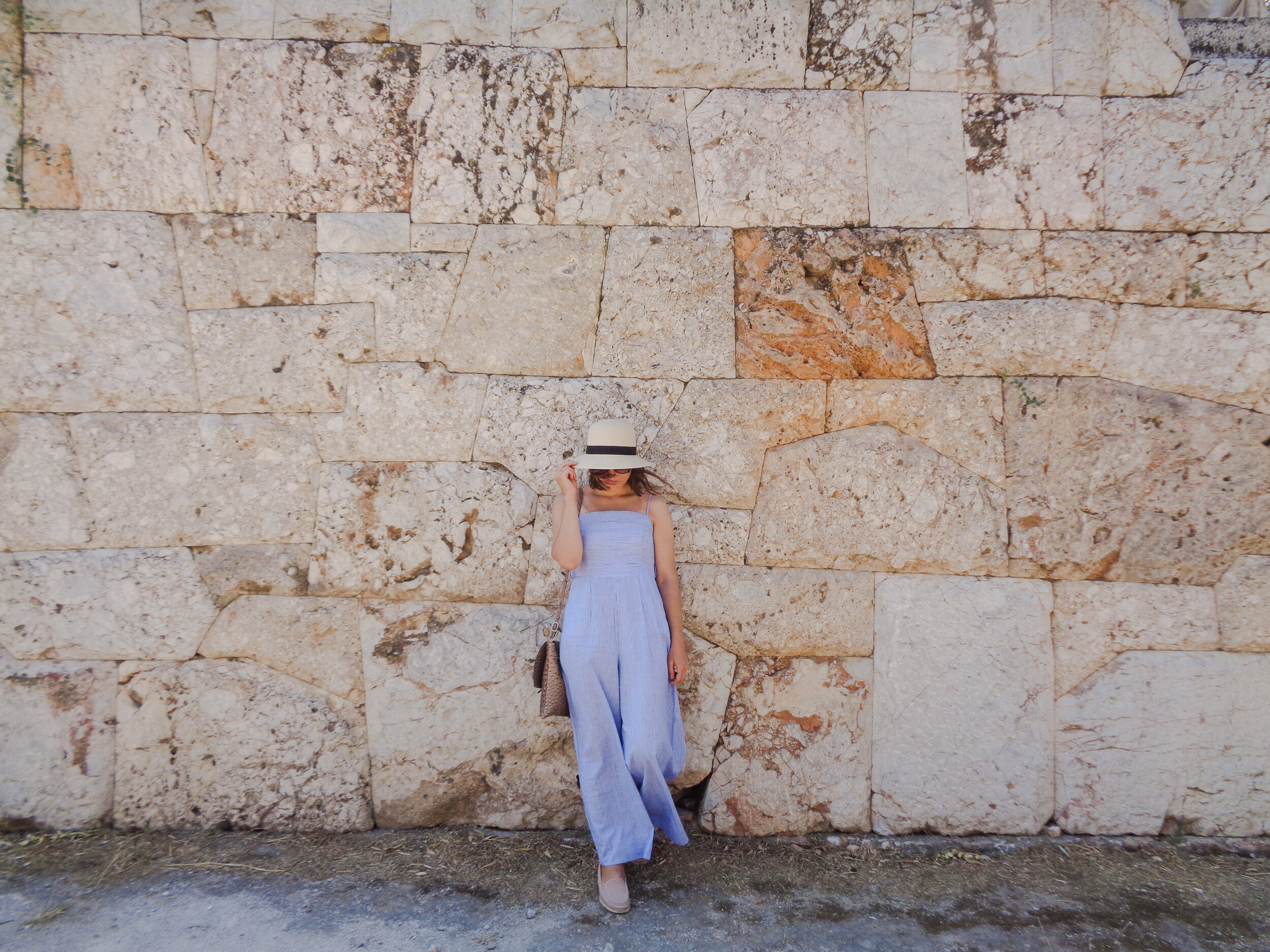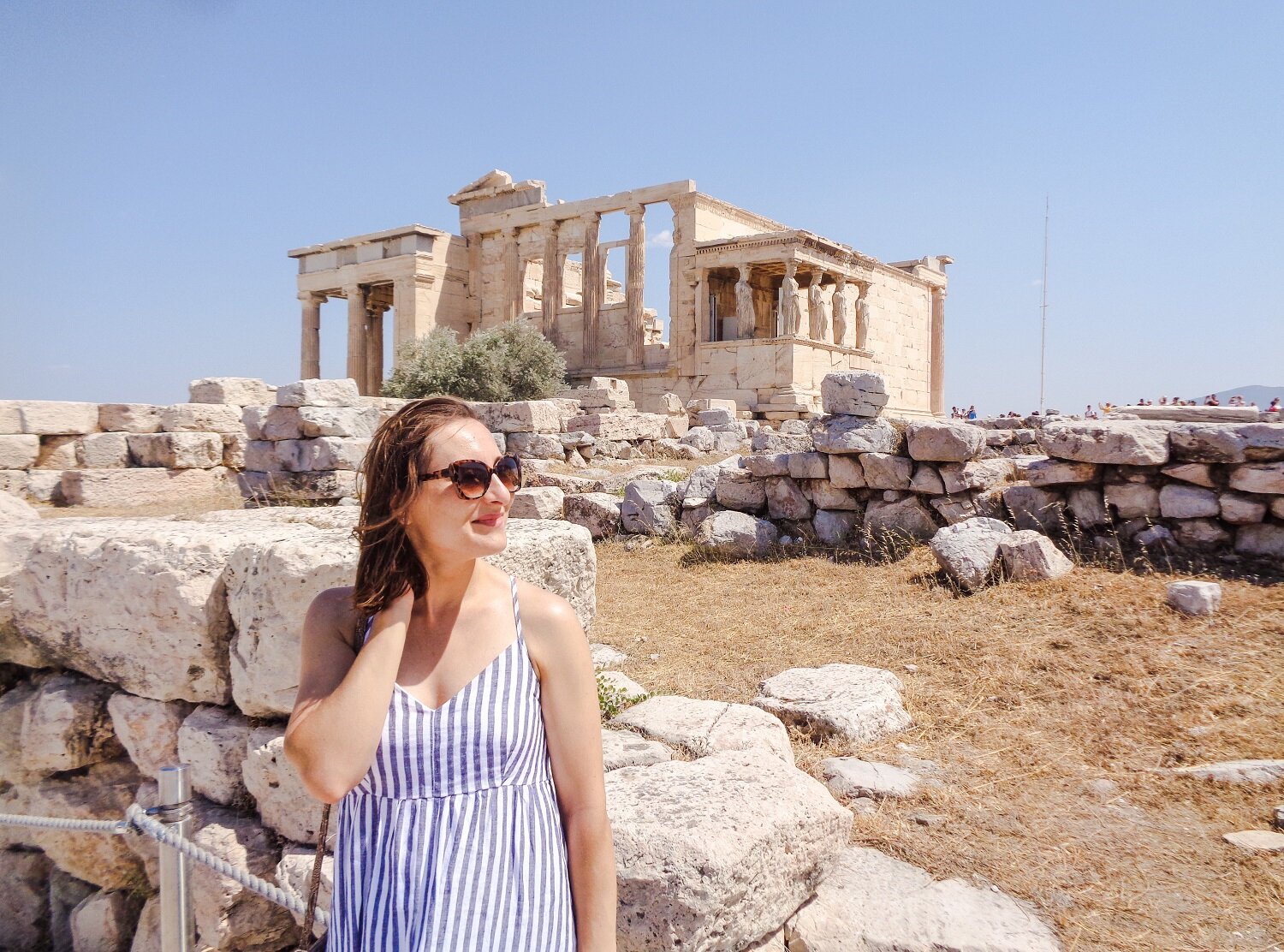Rome, Italy, part 3
After we familiarized ourselves with the city of Rome a bit, the next day we went to tour The Colosseum, The Palatine Hill, and the Roman Forum.
We didn’t purchase tickets in advance, and even though we got there before 9am, we waited for what felt like a long time in the unforgiving heat, before we finally got to purchase our tickets, and after that, waited in line some more to be allowed inside. For that reason, I definitely recommend purchasing tickets ahead of time if you can, as there is a limited number of people allowed inside at a time (I believe around 3000), and group tours have priority when entering, from what we’ve seen. Note: you’ll have to go through security (have your bag checked and go through a metal detector), bulky backpacks/bags are not allowed.
Once we finally got through the gates, we went straight up the steep stairs to the second floor (ring), the highest one can go without a “special” ticket; the underground, and more recently, 3rd-and-up floors are available via guided tours.
While the feeling of being in this ancient construction was something to remember, I could not stop thinking of the suffering, as well as the cruelty that took place there. It’s believed that over 400,000 people died at the Colosseum; as watching people fight to their death was one way of entertainment back then, cheering on someone’s death is something unimaginable to me. That feeling stood with me throughout our visit there.
In spite of that, I tried to take in the amazing architecture, and marvel at the years it withstood - after all, not much of what is built today has that kind of “grandeur” and will last that long. Fun fact: contrary to common belief, Caesar was long dead before Colosseum was built, so he never stepped foot in this famous construction.
Of course, a good portion of the Colosseum is undergoing reconstruction efforts; seeing the scaffolding cover the walls “brought me back” from the “ancient” moment.
We walked around the 1st and 2nd floors back and forth a few times, but there was little to no shade there and it was getting crowded. We left the arena, since, as mentioned in my previous post, the weather was hot, and retracted “inside” to tour the artifacts displayed throughout.
After, we proceeded to The Roman Forum, where we again waited in line, even if we had tickets - I believe the holdup was because of security, as well as group tours being prioritized.
While I’m happy we have had the chance to visit the Colosseum, what I really found fascinating was the Palatine Hill and the Roman Forum. Thousands of years ago it served as the commercial, administrative, and religious heart of Ancient Rome. With the fall of the Roman Empire, the Forum saw its demise and became ruins as the marble and stone that formed its buildings were stolen, and later on, this land literally became a cow pasture. Only around the 17th-18th century, The Roman Forum was excavated to reveal much of what we see today.
While there isn’t actual evidence to support this, it is believed that Julius Caesar’s grave is found here at The Temple of Caesar. The place itself is marked only by a plaque, as is referred to as “Altar” with the following inscription in Italian (translated) “Altar of Caesar
...they placed Caesar’s body again in the Forum where in ancient times stood the palace of the kings of Rome. There they collected together sticks of wood and benches, of which there were many in the Forum and anything else they could find of that sort, for a funeral pile. Then they set fire to it, and the entire people remained by the funeral pile throughout the night. There an altar was first erected, but now there stands the Temple of Caesar himself, as he was deemed worthy of divine honors”.
As we entered the Roman Forum, we made our way to the “Uccelliere Farnesiane” the terrace, from where one can see the entire Forum and some views of Rome.
While strolling through the gardens, clouds covered the sky, and it began to rain. Once again, we, along with all the other people ran for cover under the trees (I’ll say it again - do not do that during a thunderstorm). Luckily, the rain didn’t last long, and we resumed our exploration of the Palatine Hill.
It seems that Palatine Hill is often overlooked by the tourists in Rome; we found it almost empty and were able to tour it at our leisure.
There are quite a few legends that involve this place. Some say that a cannibal lived here and terrorized the town from time to time until it was killed by Hercules.
Another legend says that Remus and Romulus (the “founder” of Rome) were raised there in one of the caves - Lupercal - by a she-wolf. Another reason Palatine is famous for - Emperor Augustus lived there.
Once we visited the caves, we walked towards another terrace offering stunning views of the Colosseum, as well as Rome.
As we left Palatine Hill, we made our way to the “grounds” of The Roman Forum, wandering through the colossal ruins, and trying to imagine how they once looked in their full glory.
We strolled through Casa Delle Vestali, home of the Vestal Virgins, women that were selected to serve the temple for 30 years, whose jobs were to look after the flame in the temple. The women were severely punished if the flame went out, or if they lost their virginity (the man responsible was punished as well).
Once we saw what we could, and because the thunder was still rumbling in the distance, we exited the Roman Forum, and continued on the streets, not knowing exactly where we were or were going.
We ended up on The Capitoline Hill and found the Senatorial Palace, a truly stunning building, designed by Michelangelo. Waiting there for a few minutes to see if it would rain again, we continued our exploration to end up at The Altare Della Patria.
It wasn’t too late in the day, so we decided to walk to the Pantheon. This building is of great significance in Italian culture, and is the best-preserved, boasting a huge dome. It is said that the location it was built on is the place where Romulus (the “founder” of Rome), at his death was taken by an eagle into the sky to the Gods.
The Pantheon burned twice in the ancient times and was rebuilt by Emperor Hadrian. The opening at the tip of the dome - The Oculus - is open, and when it rains, the water inside drains through the drainage system created on the floor. Its only source of light was the opening above. As the sun moves throughout the day, so does the light protruding through it, reflecting on the walls.
Visiting the Pantheon is free, and is a “must-see”, especially inside as it really is massive. It serves as a church today; Raphael, the famous Italian artist’s grave is here, as well as some Italian kings and poets.
From the Pantheon, we moved along to come to the Piazza di Spagna which houses the famous Spanish Steps. This place is insanely popular as it has been featured all over Instagram, and the Internet, and not surprisingly, was packed with people. Not being that impressed of it, as we have seen far nicer places in Rome so far, we decided to leave.
Note: some of the most famous luxury brands have their stores here, and on the near streets, and so, Piazza di Spagna attracts all sorts of people, and is almost always crowded. If you want photos without the crowds, your best bet is to get there at 7-8am.
From Piazza di Spagna, we continued to Piazza del Popolo, another famous place in Rome, which boasts the oldest Obelisk, and the city’s northern gate. To our surprise, it was fairly empty. We didn’t however, spend much time there either - it had been a long day for us. We strolled through the streets, towards our B&B. Because we were so tired (the heat didn’t help), we decided to get take-out from Barberini Express and call it a night.
To be continued…
Until next time.
xoxo,
Em

